
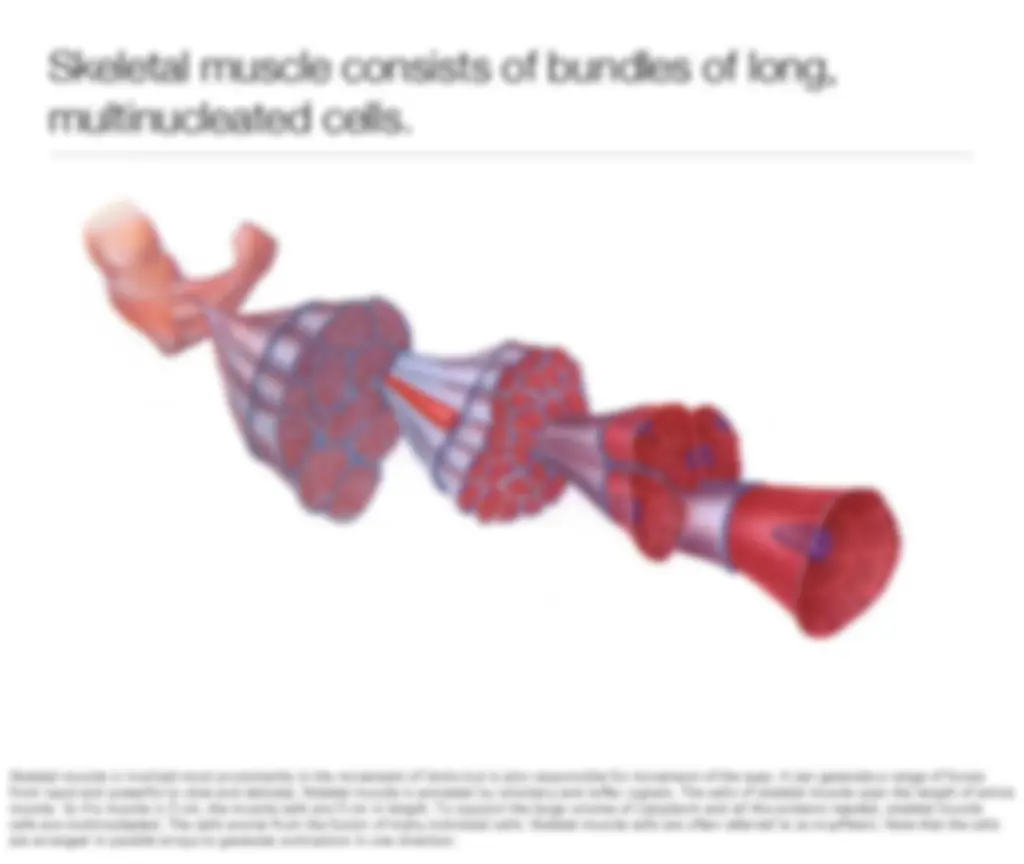
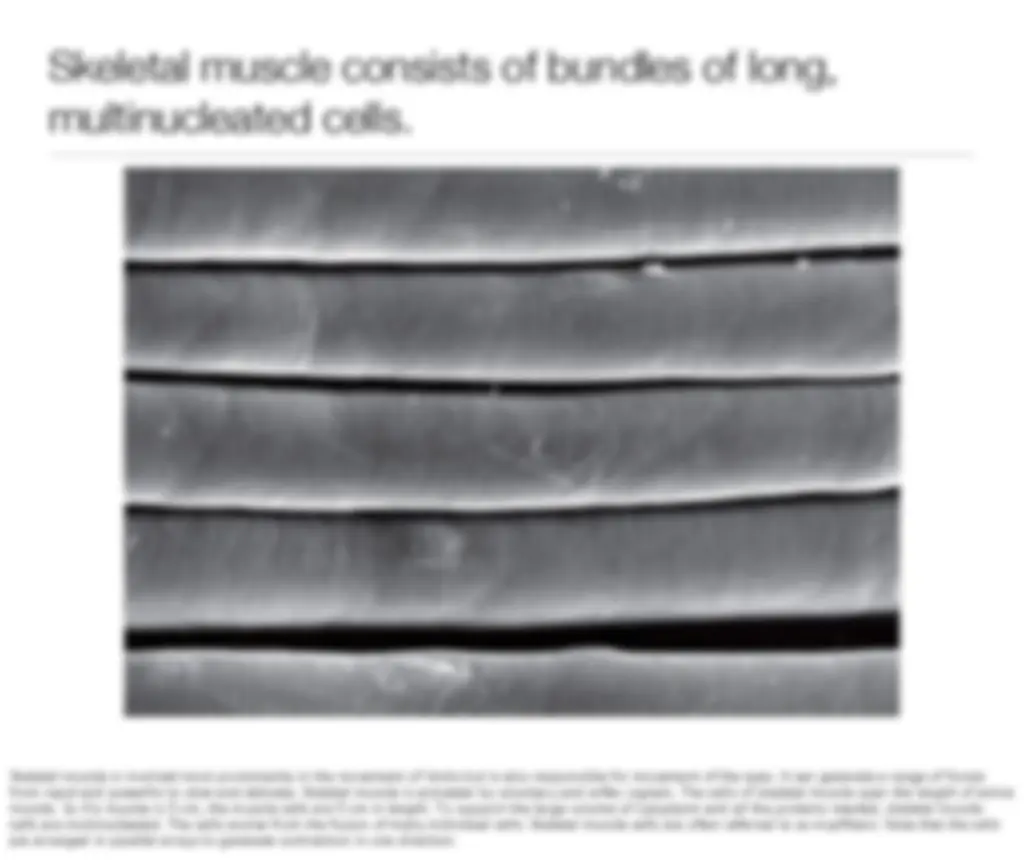
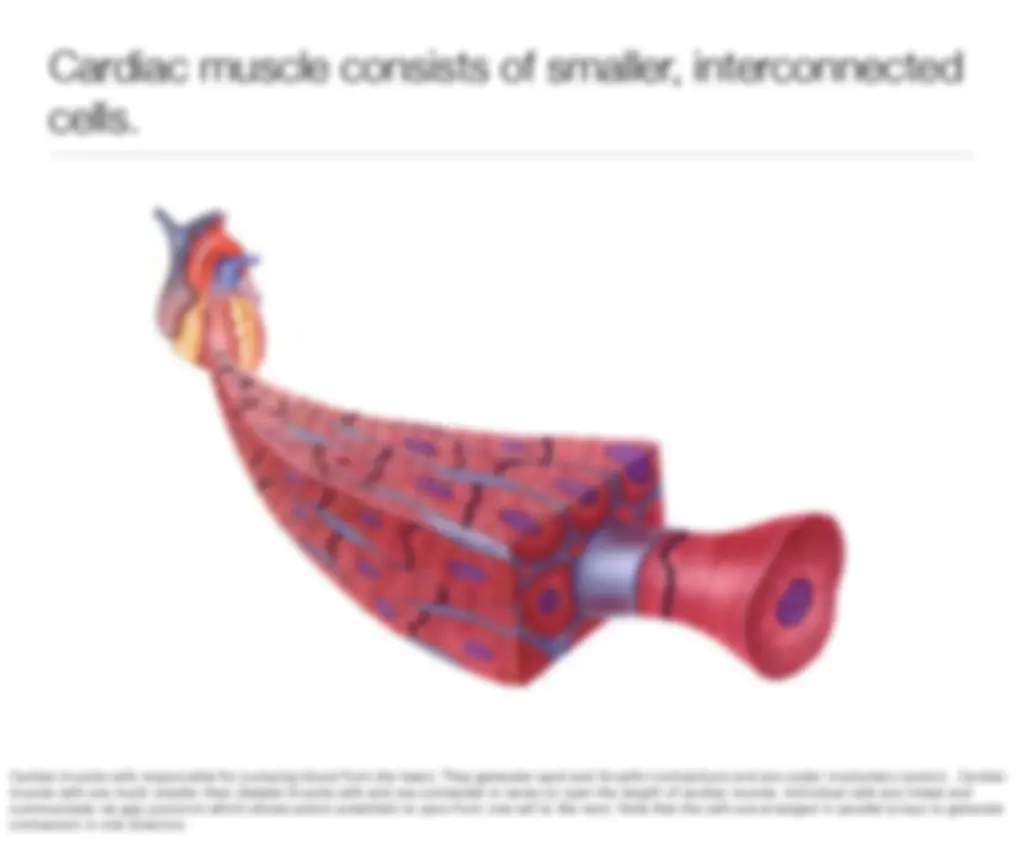
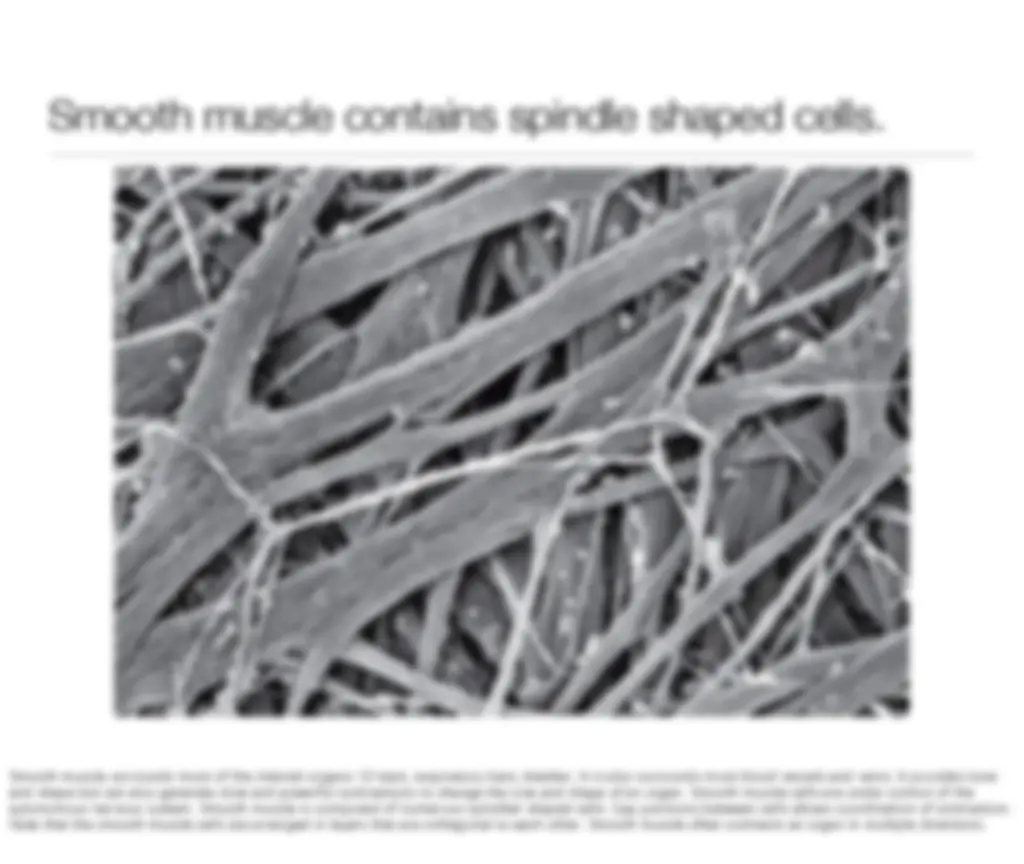
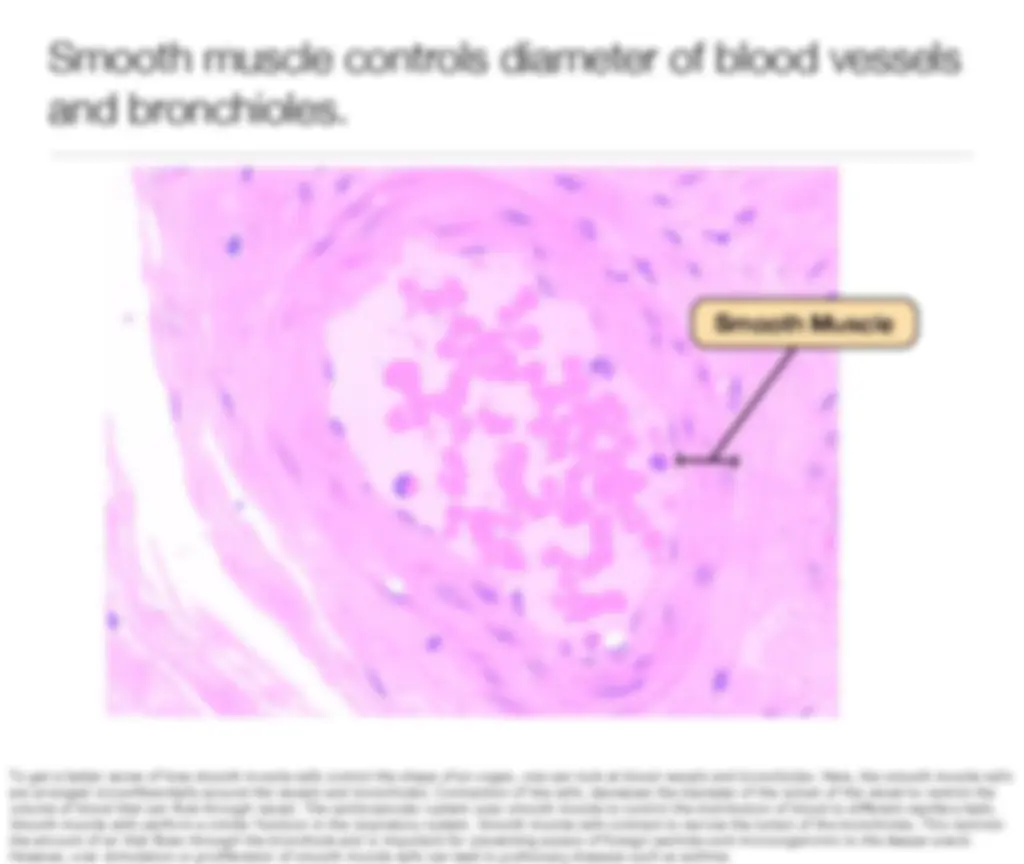
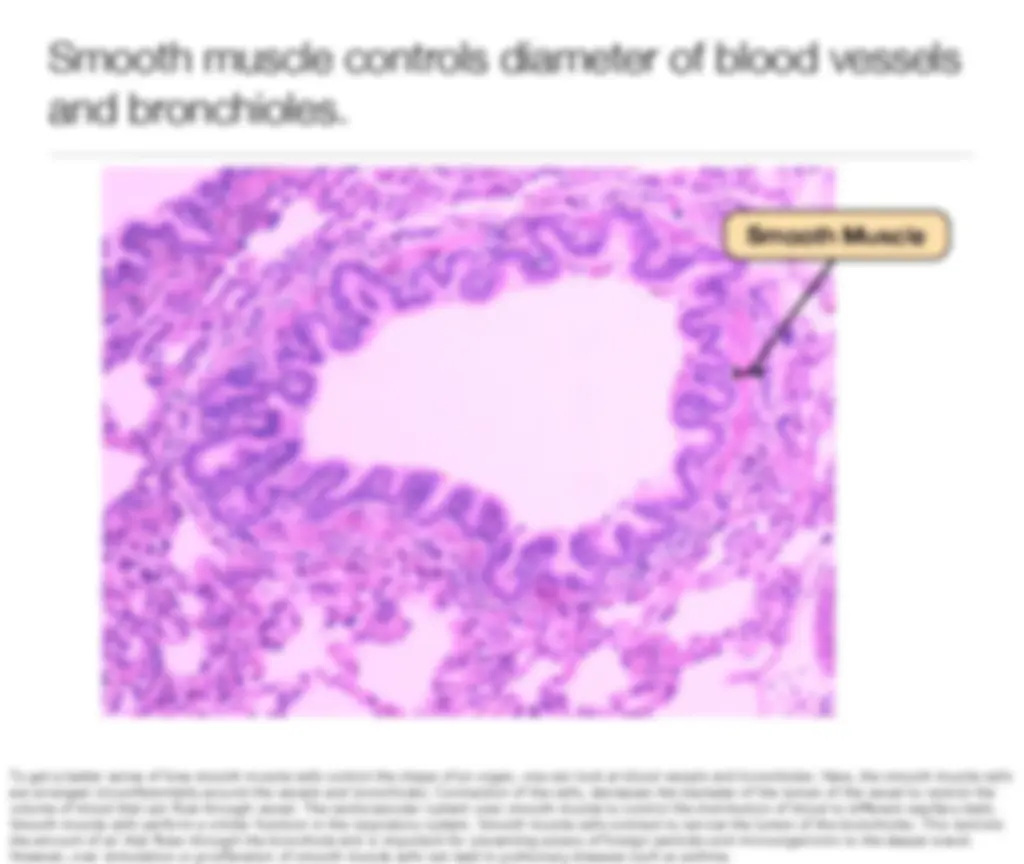
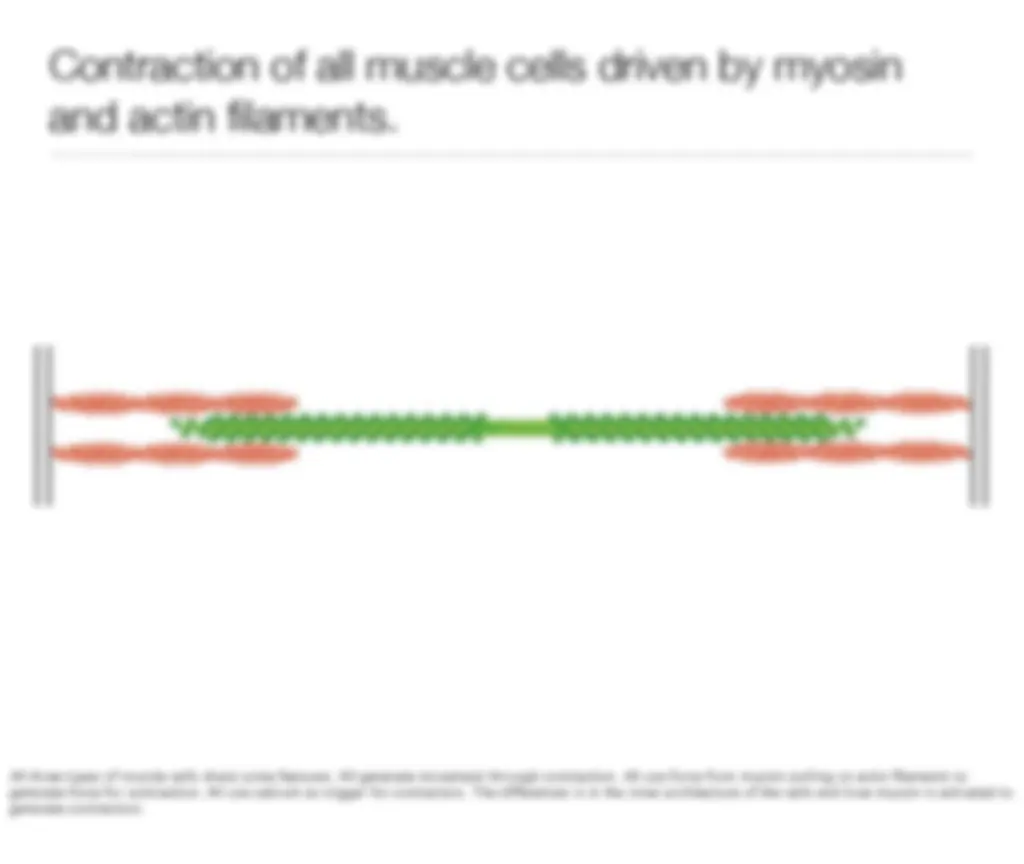
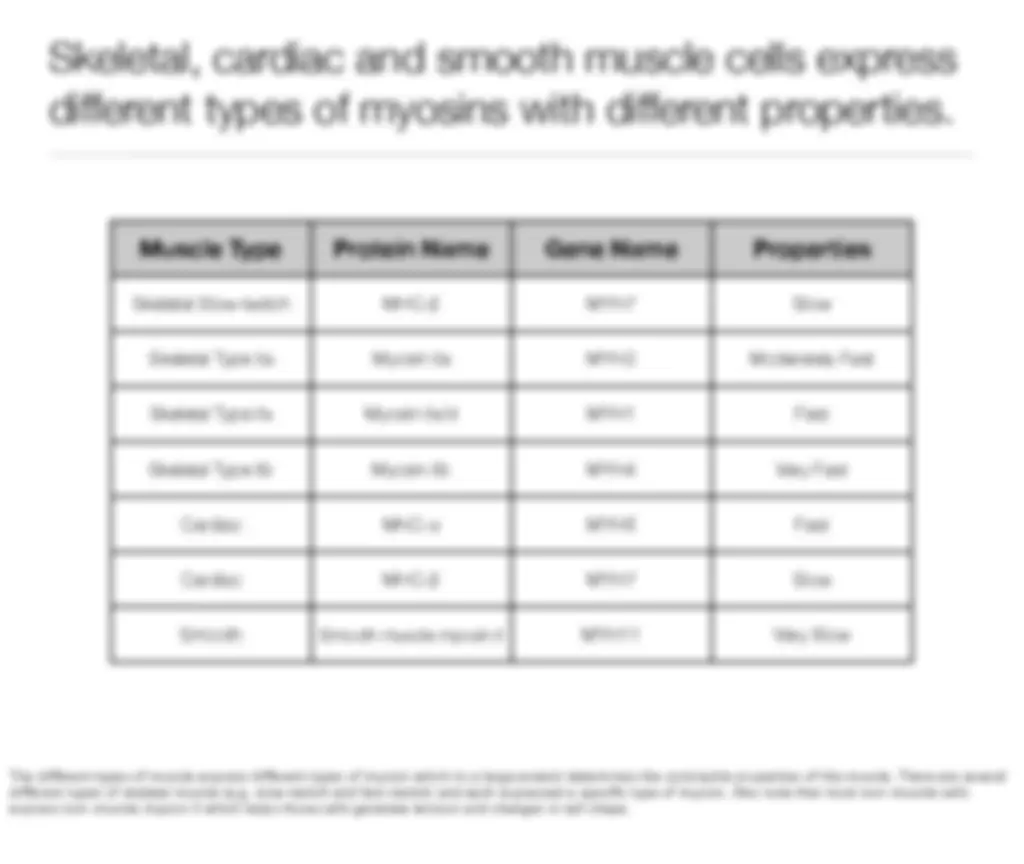
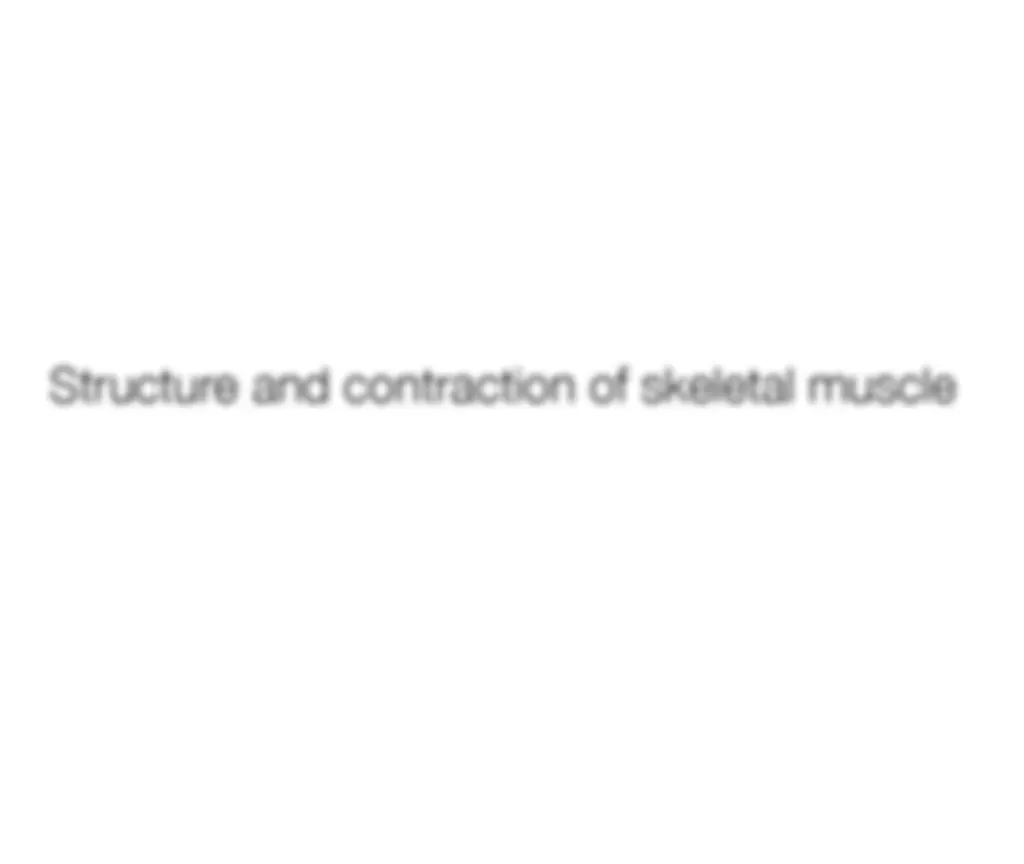
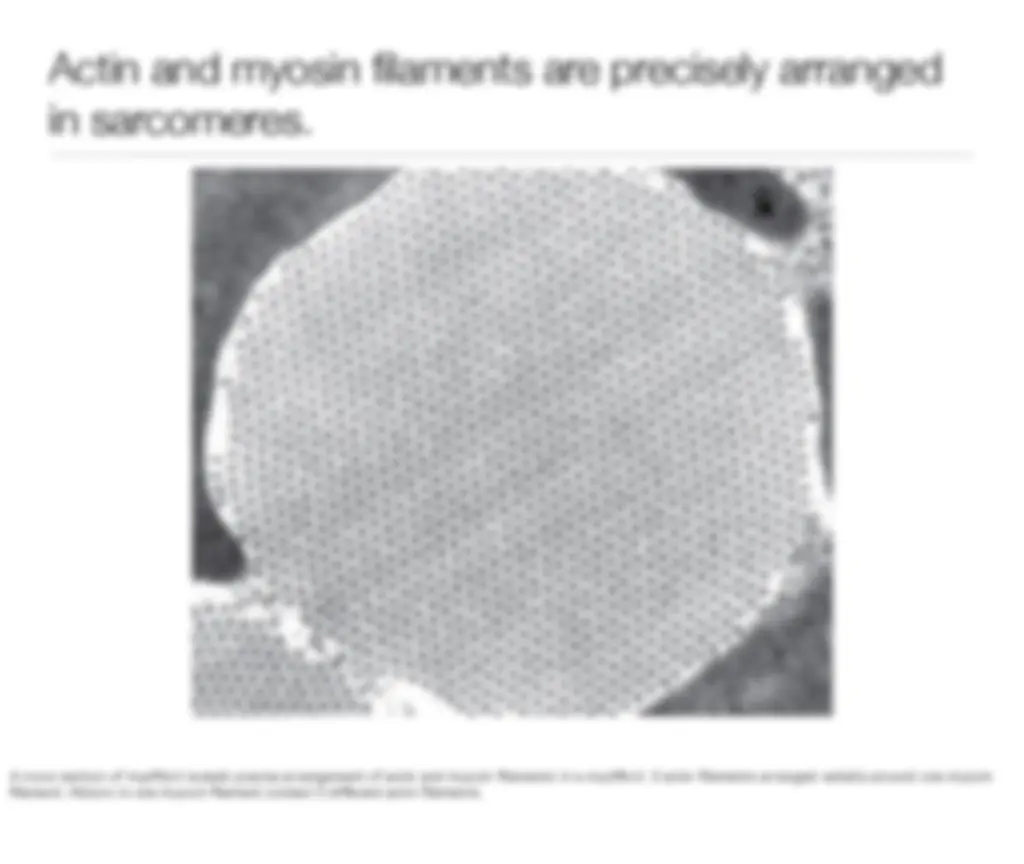
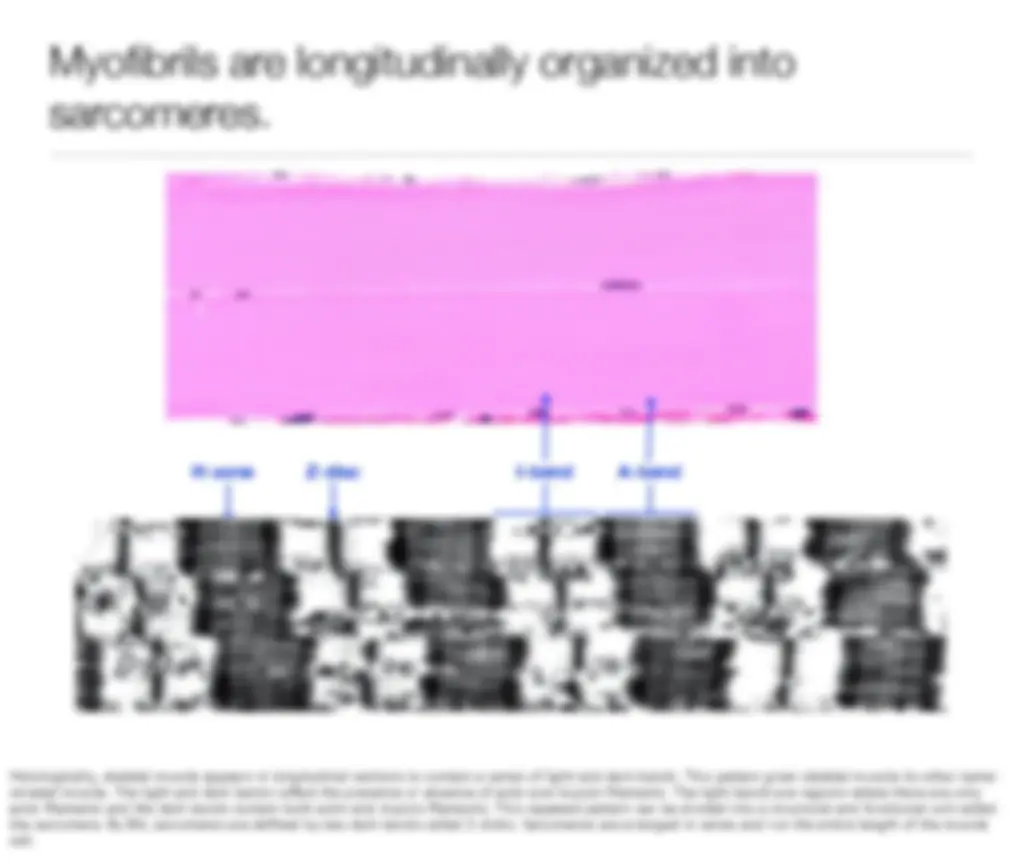
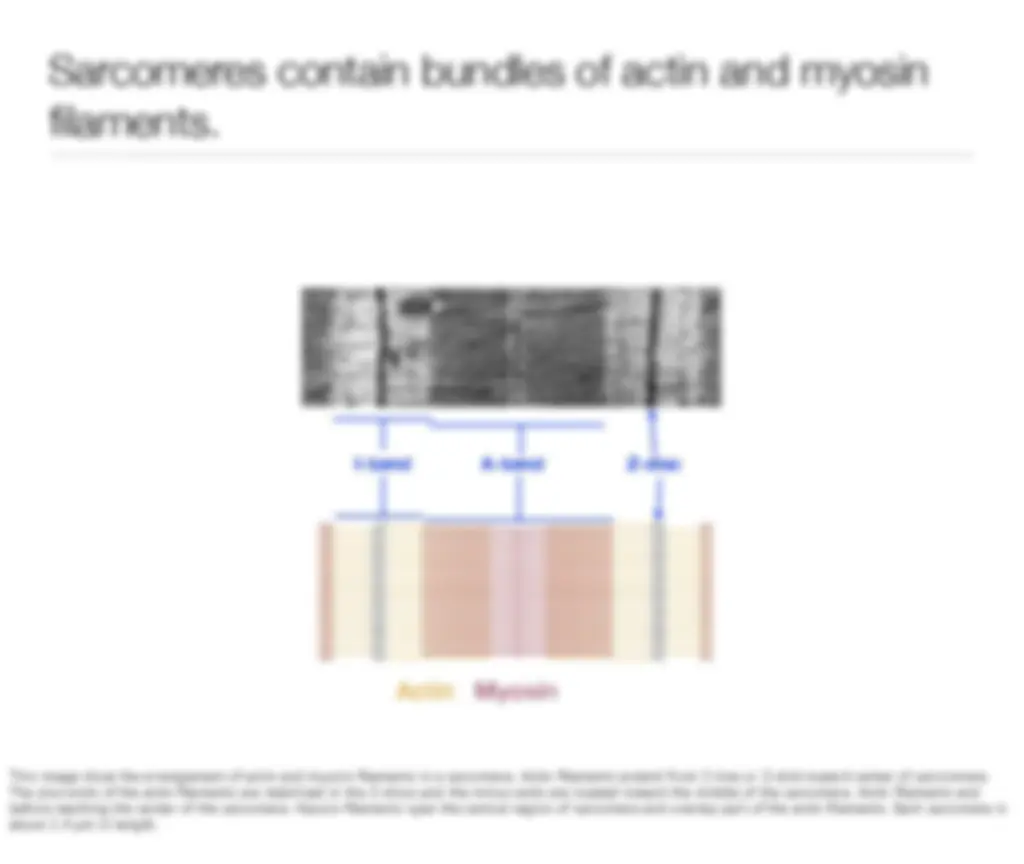
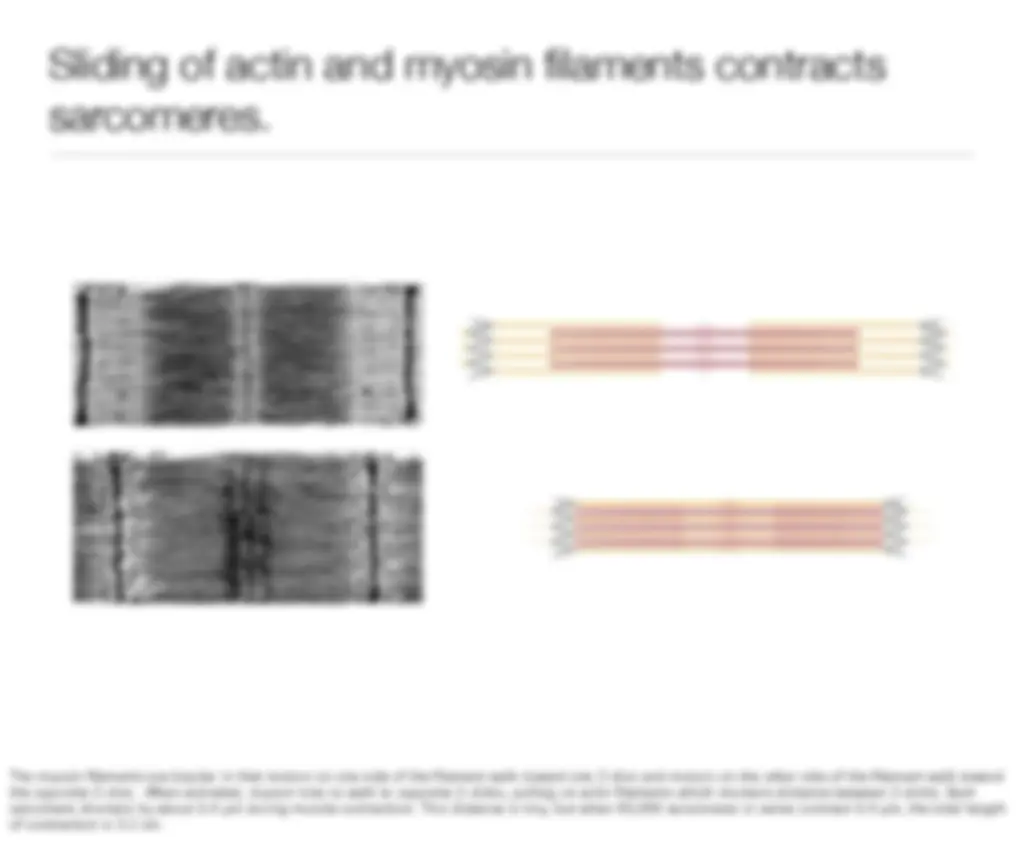
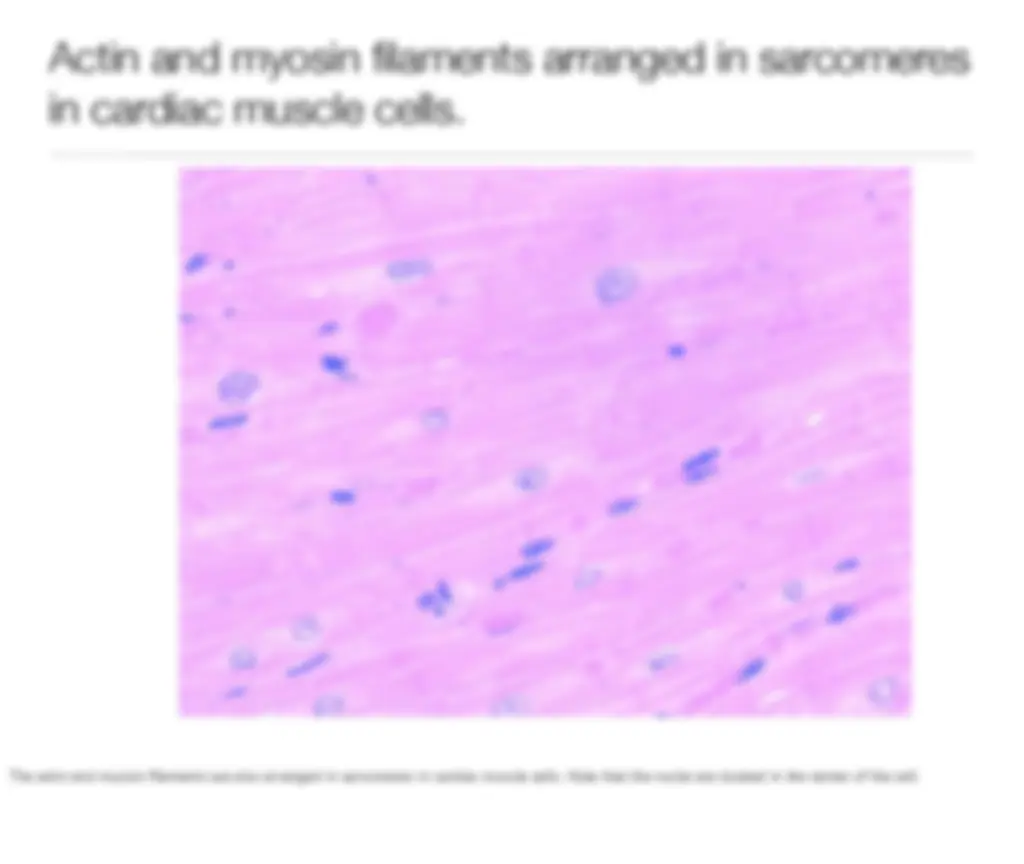
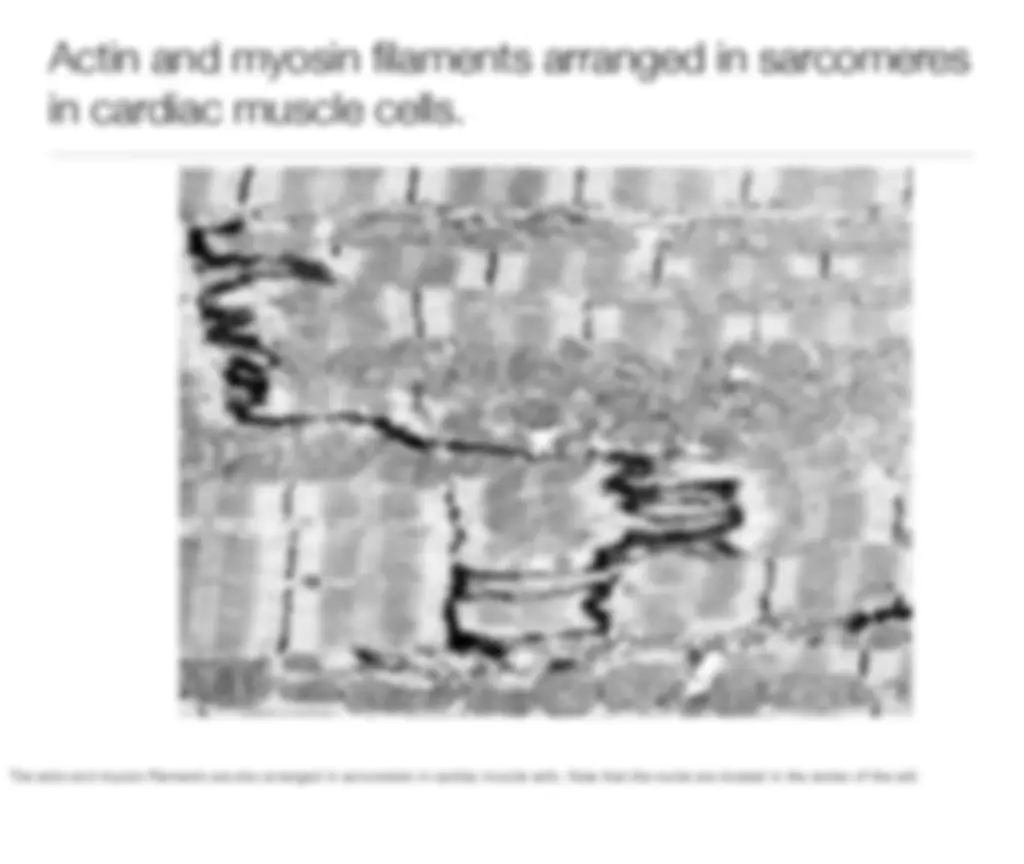
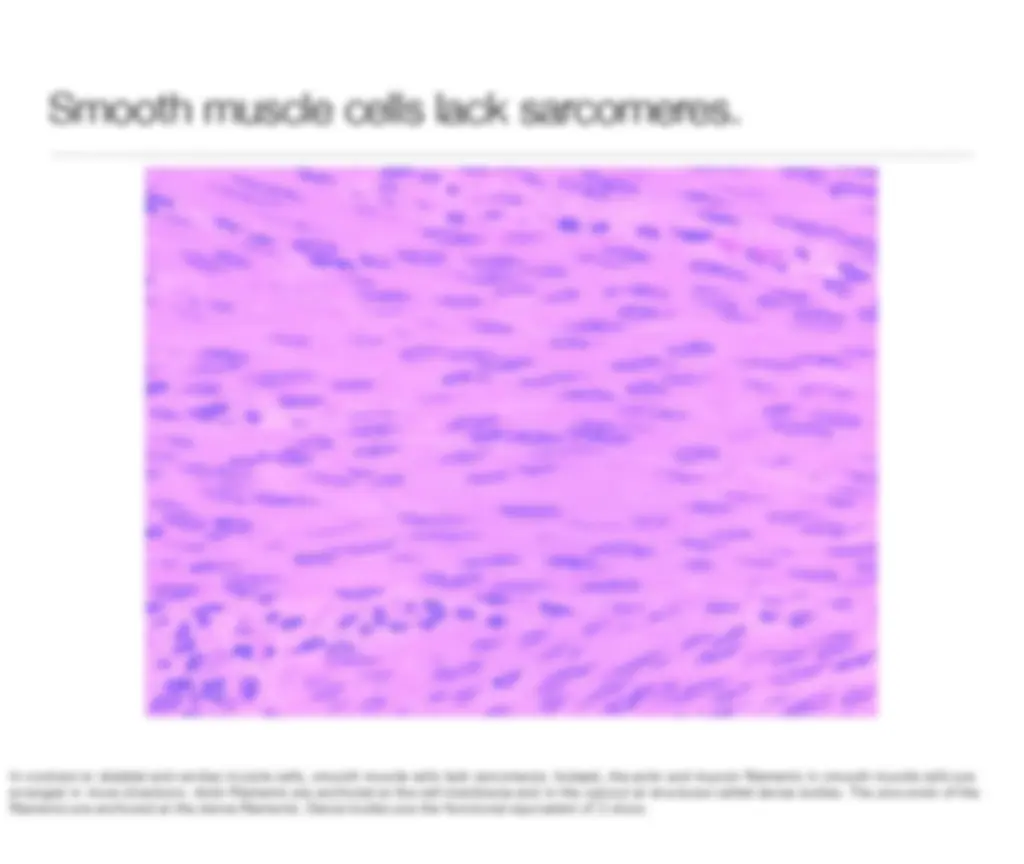
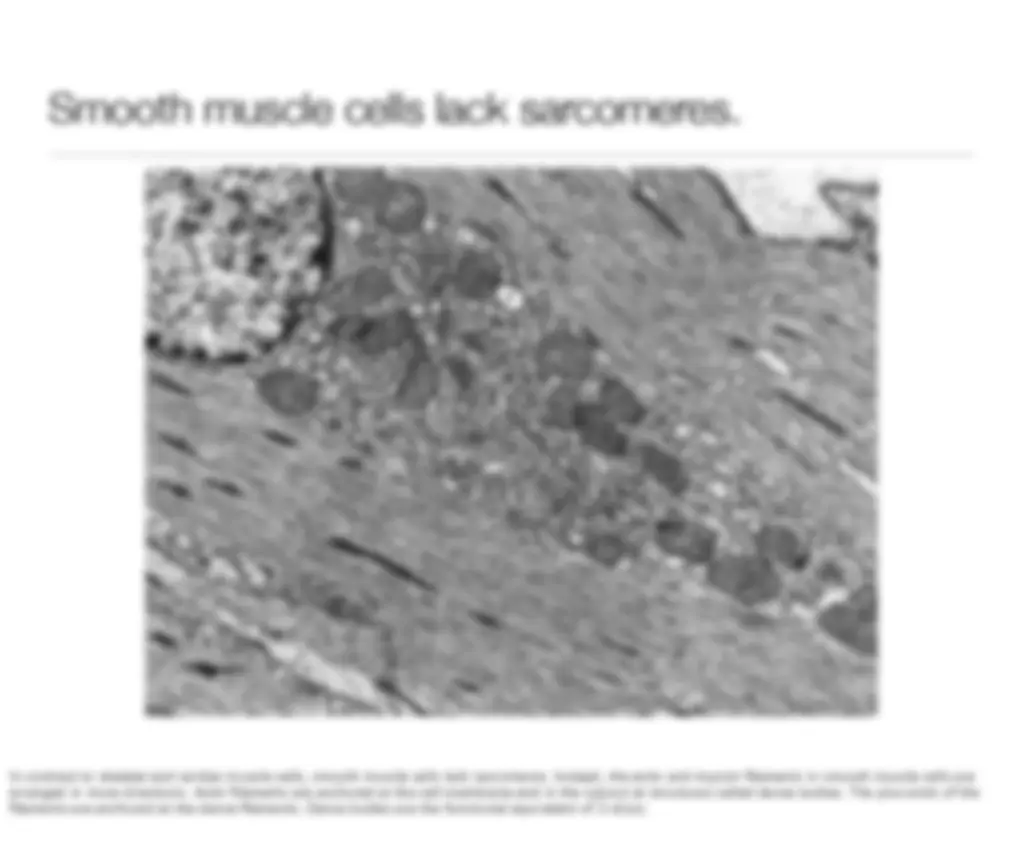
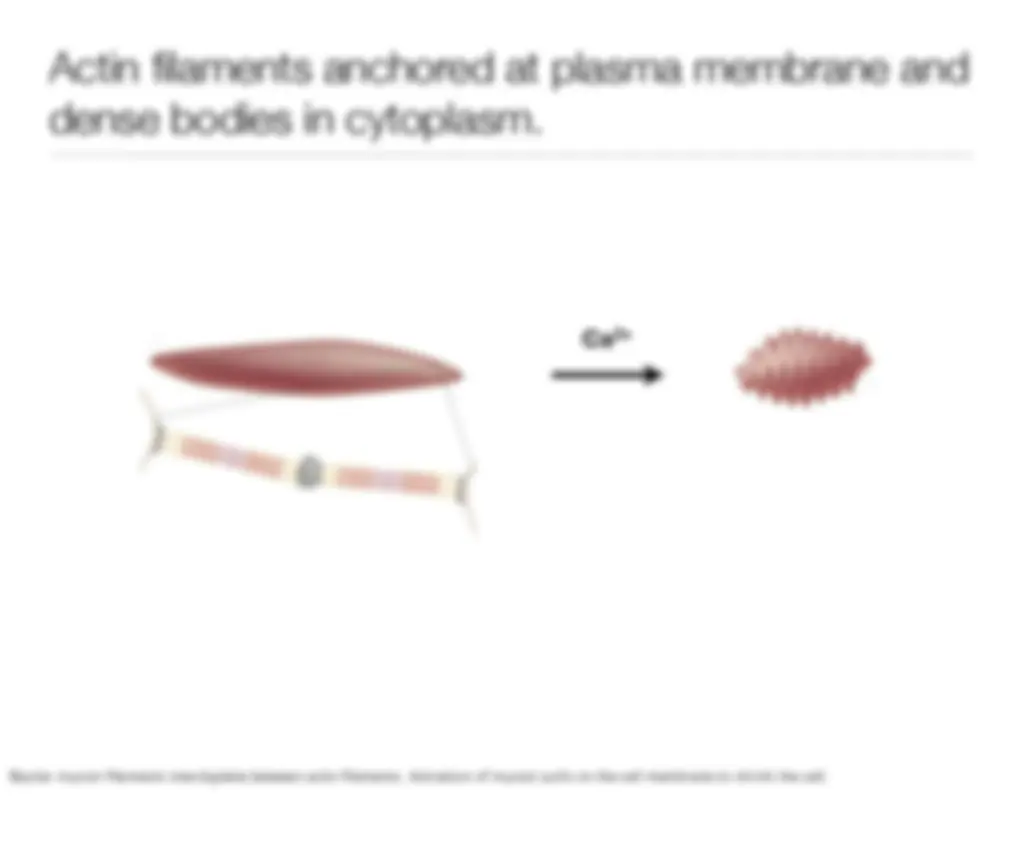
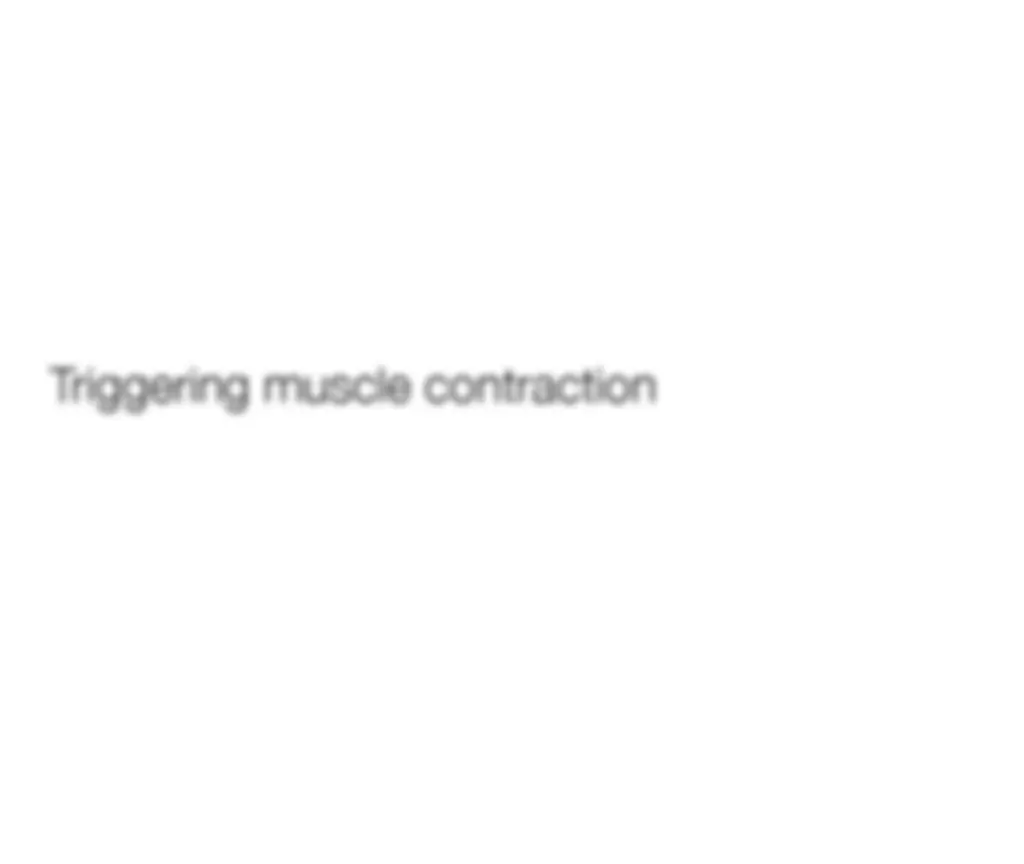
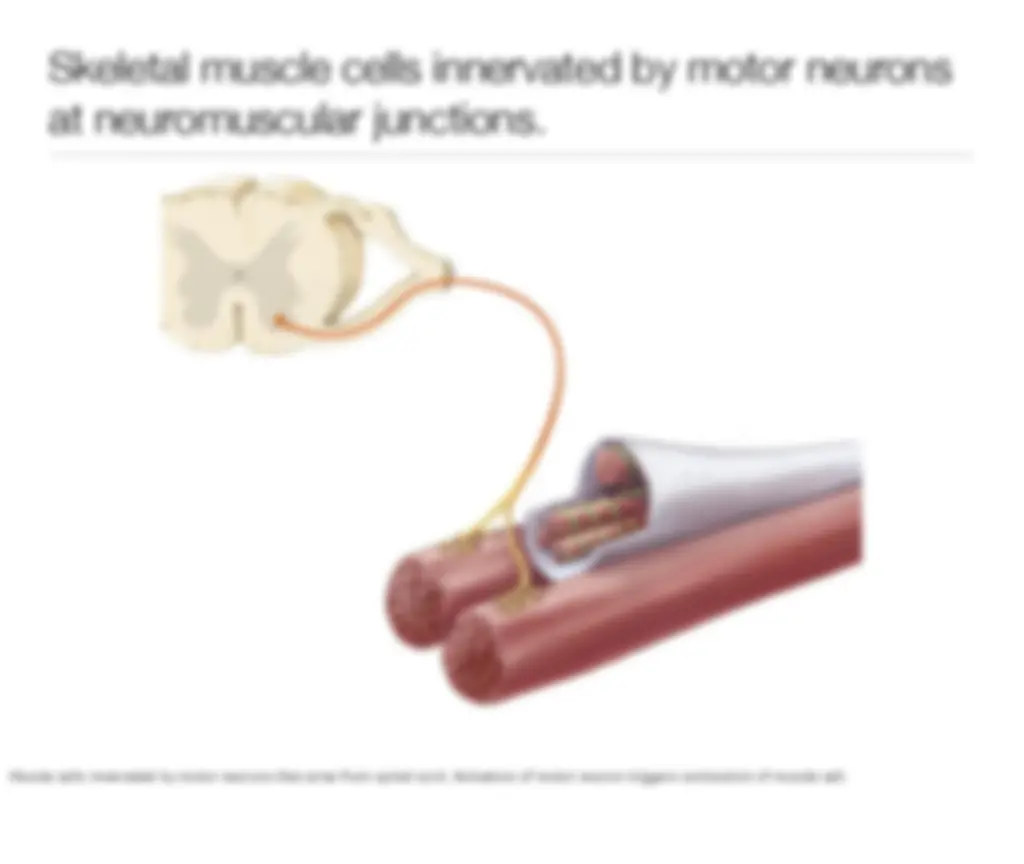
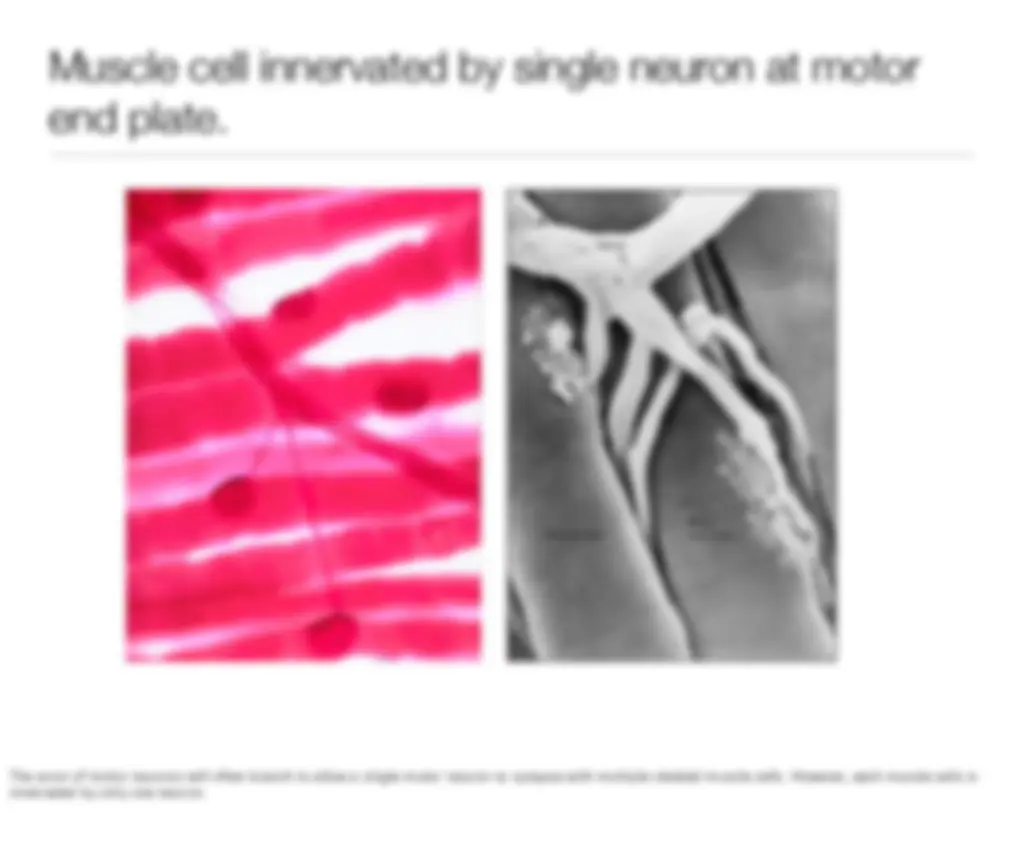
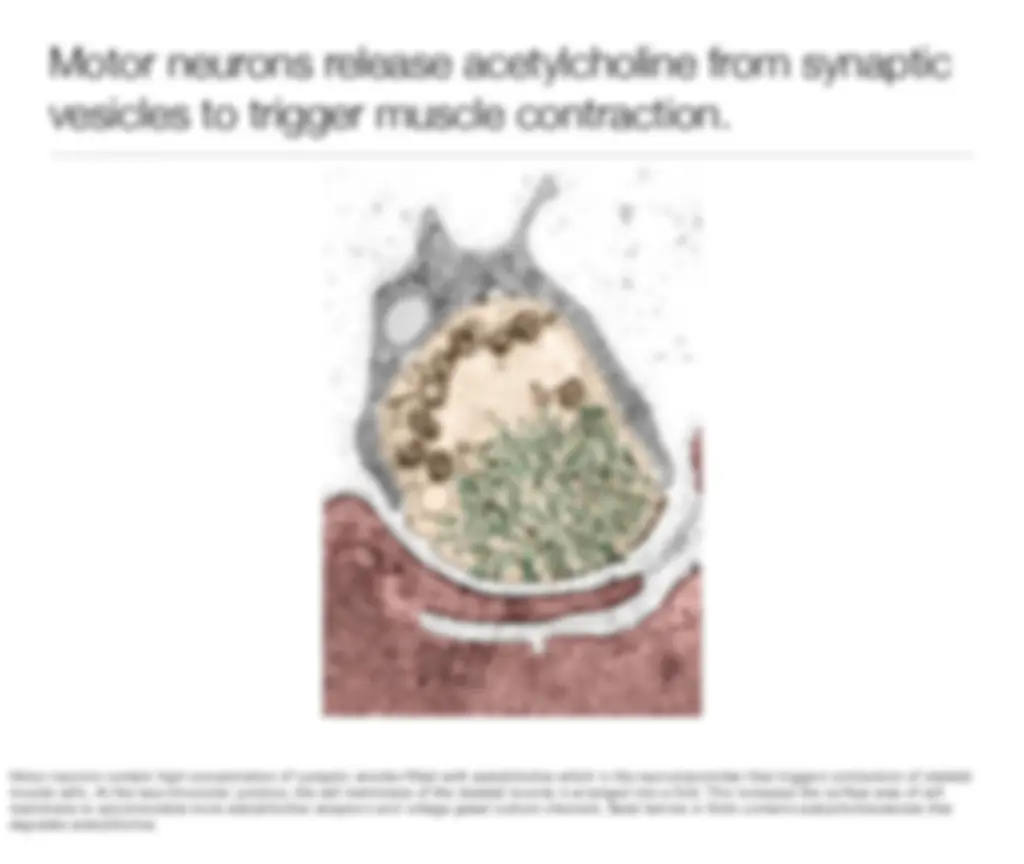
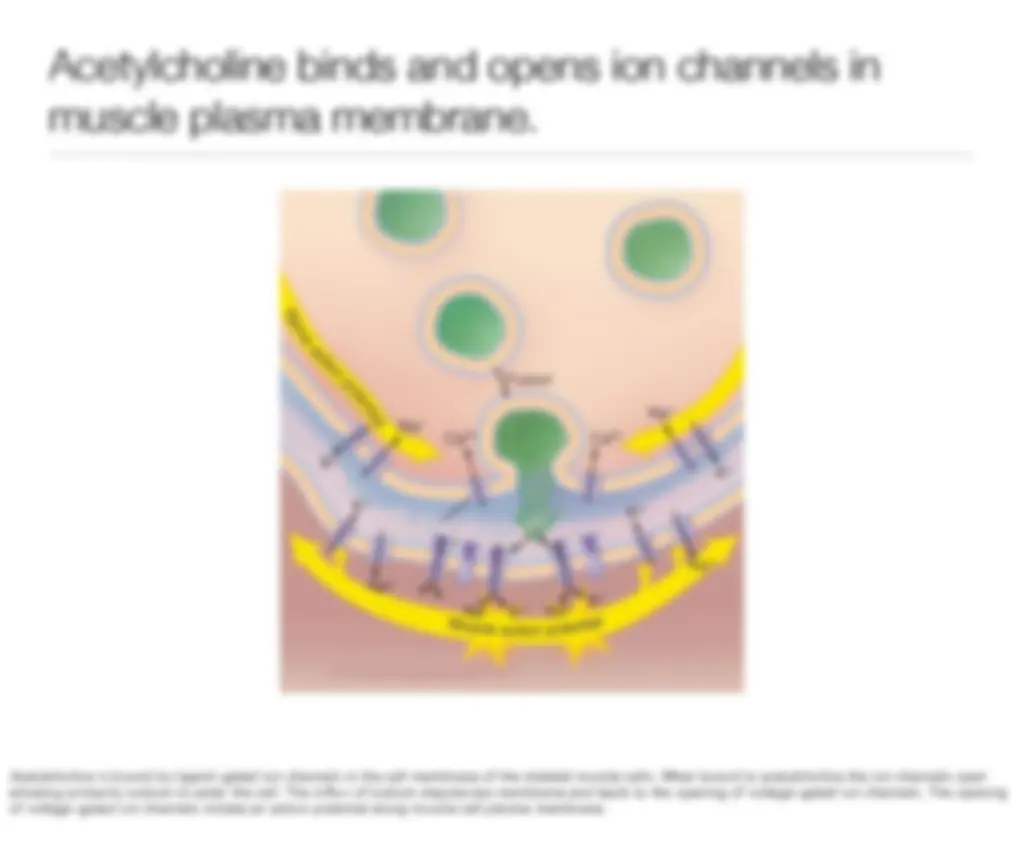
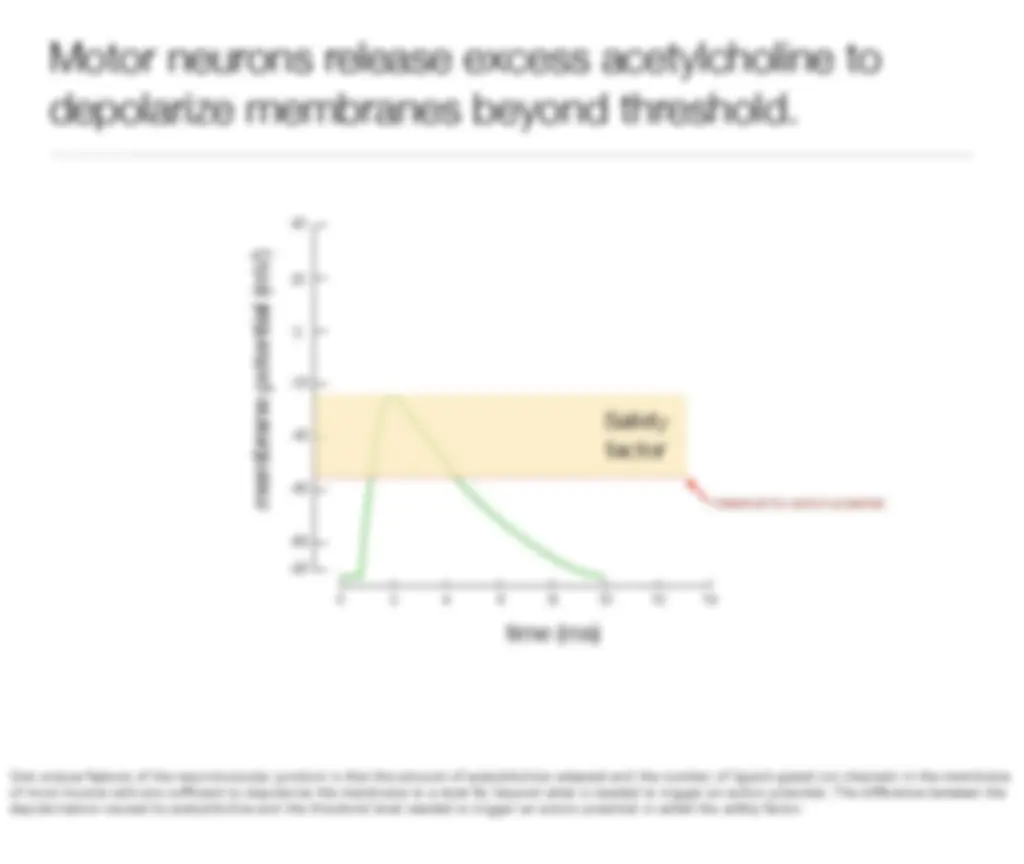
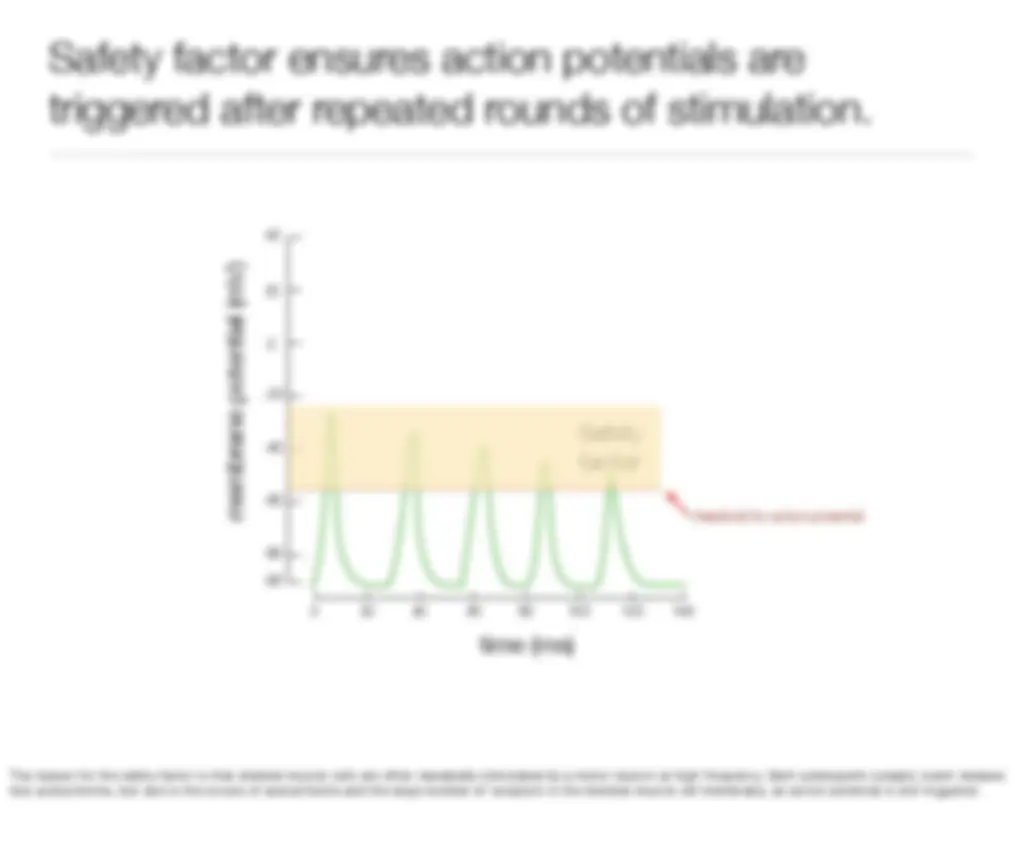
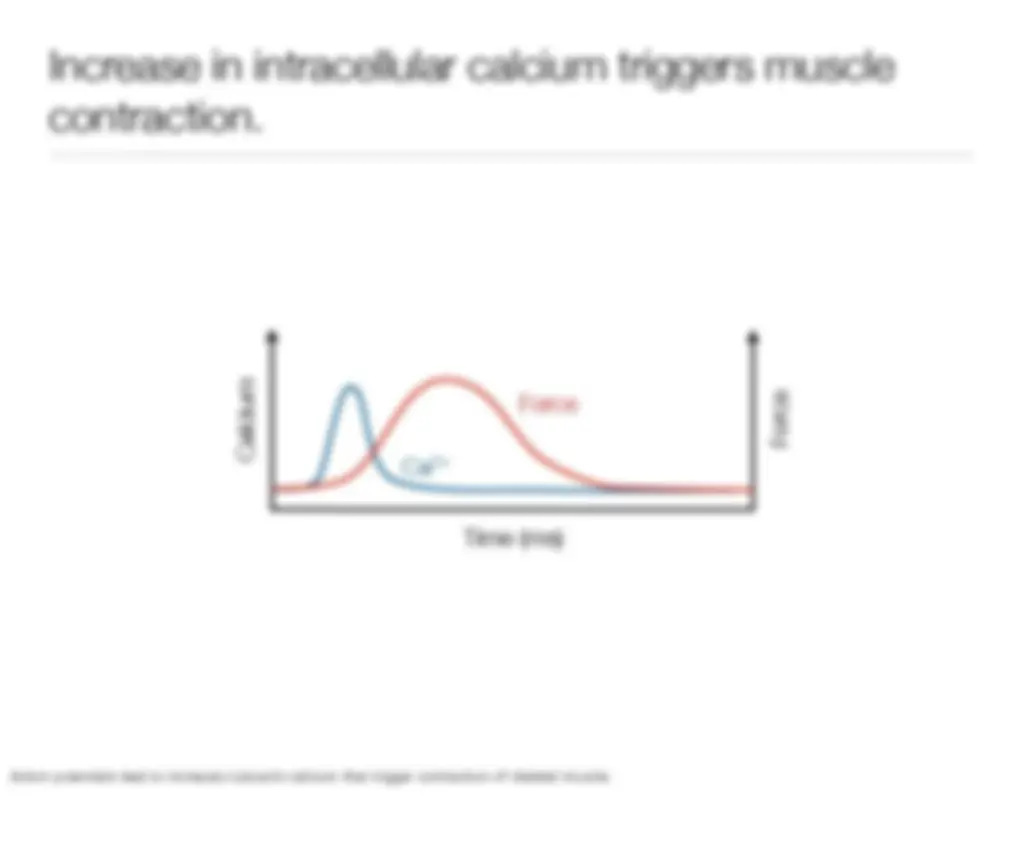
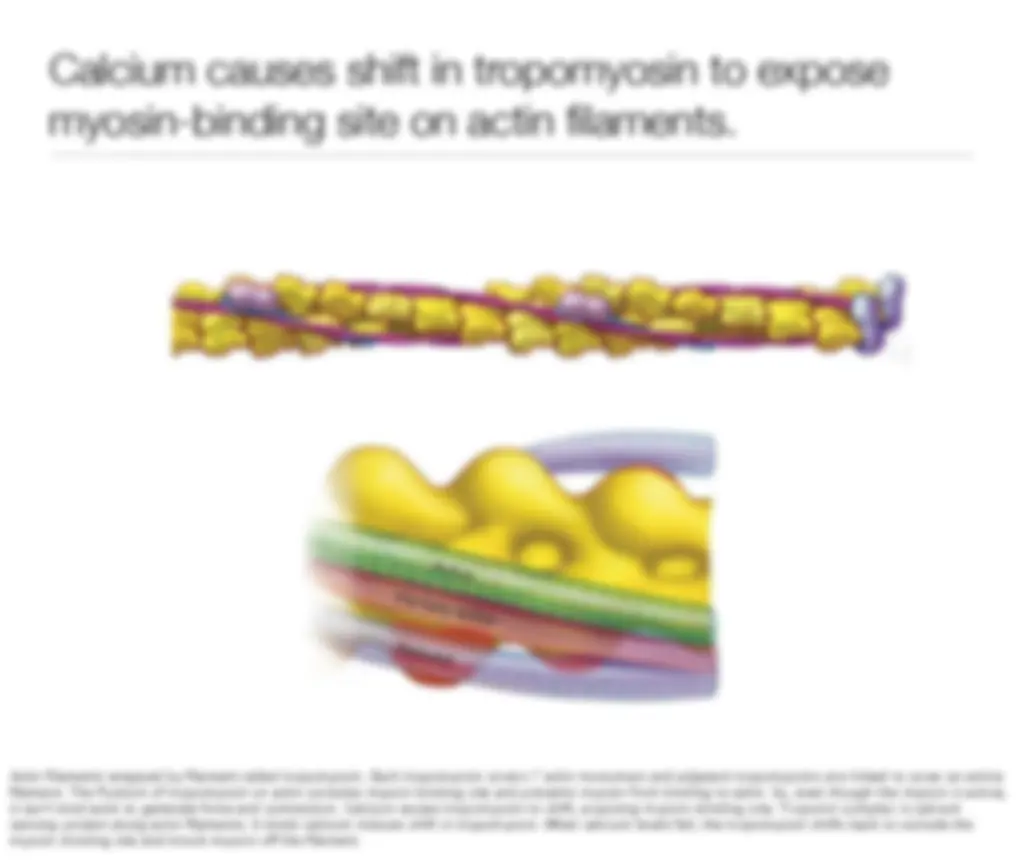
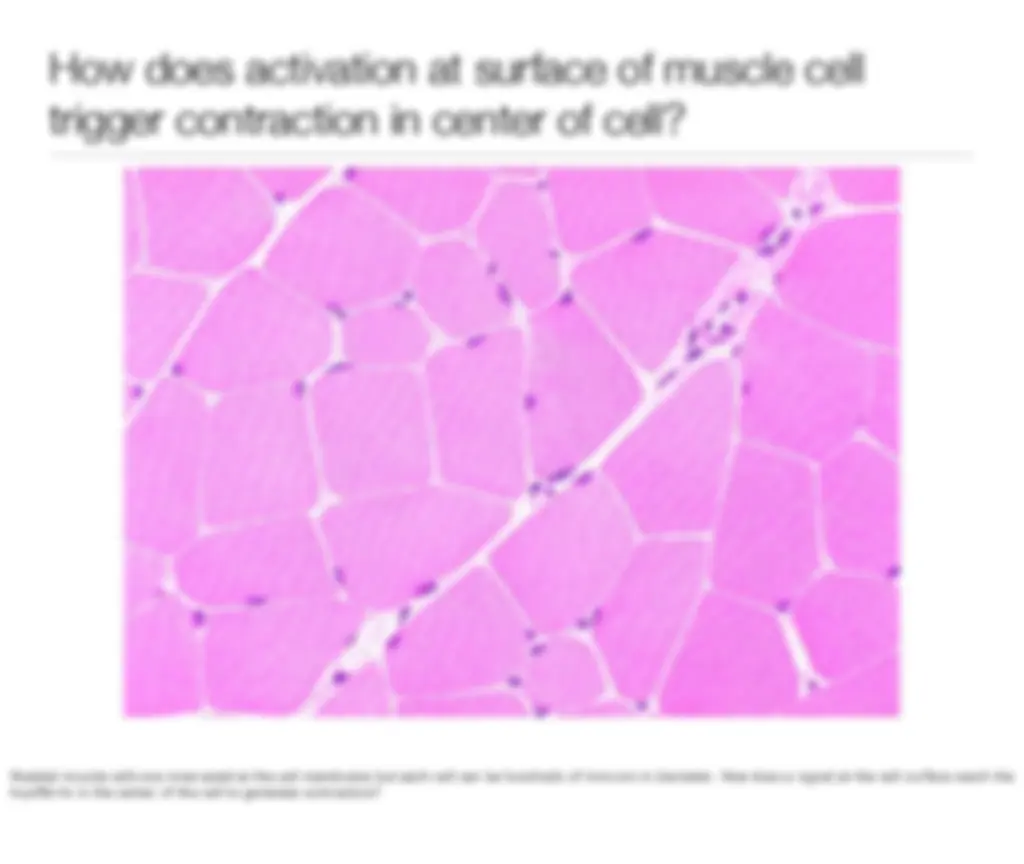
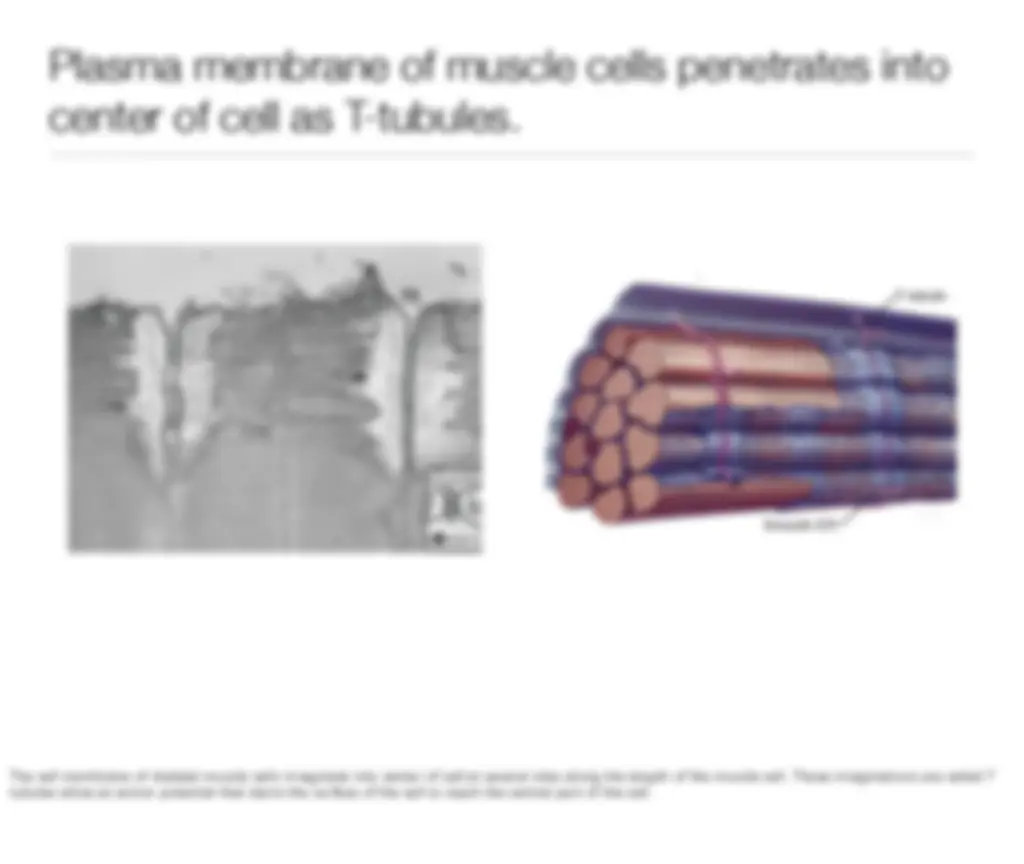
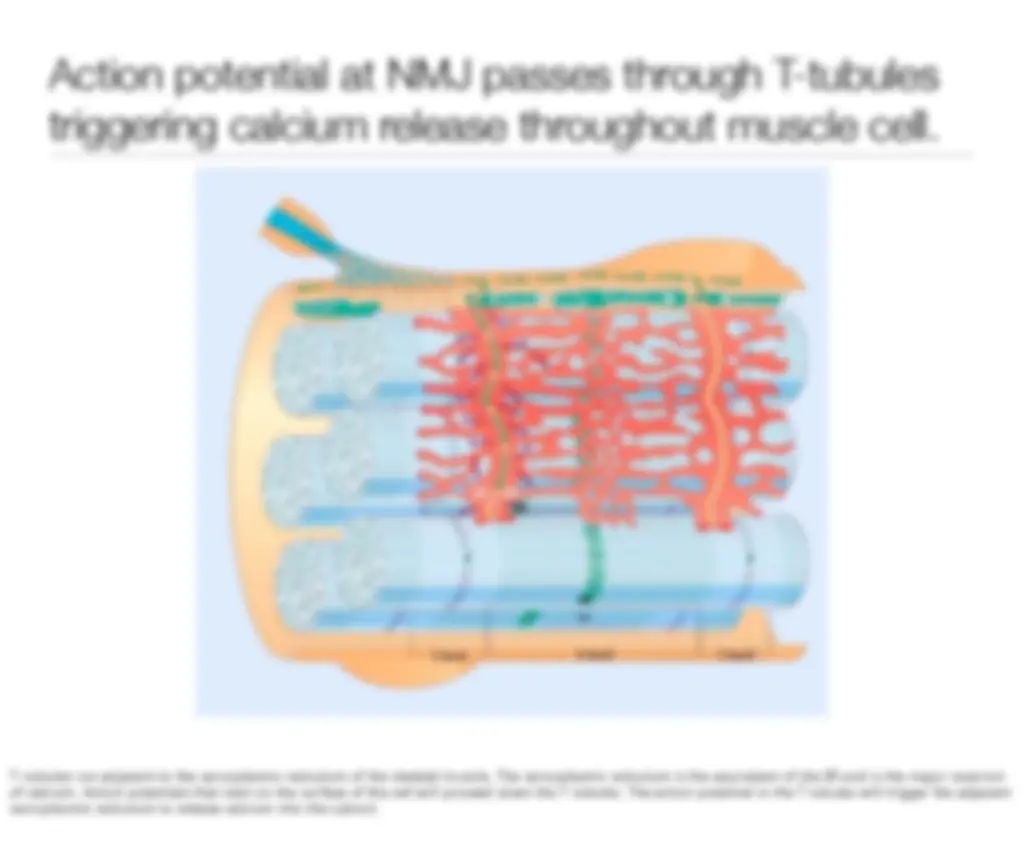
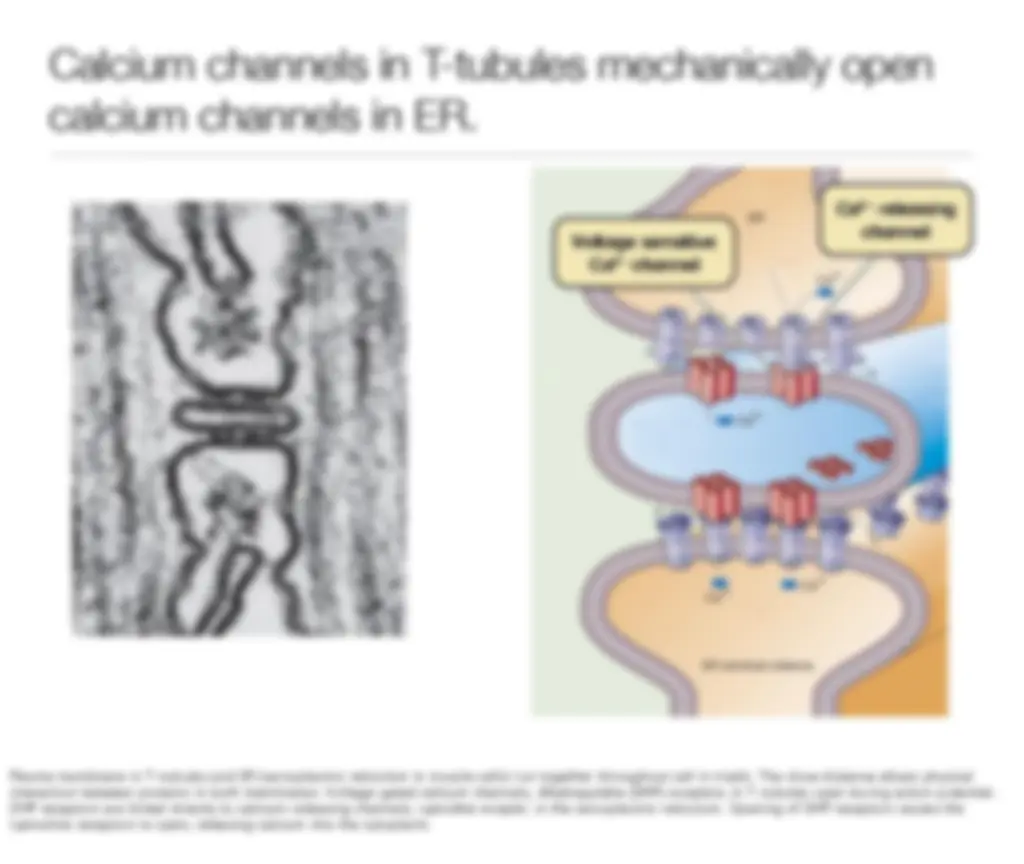
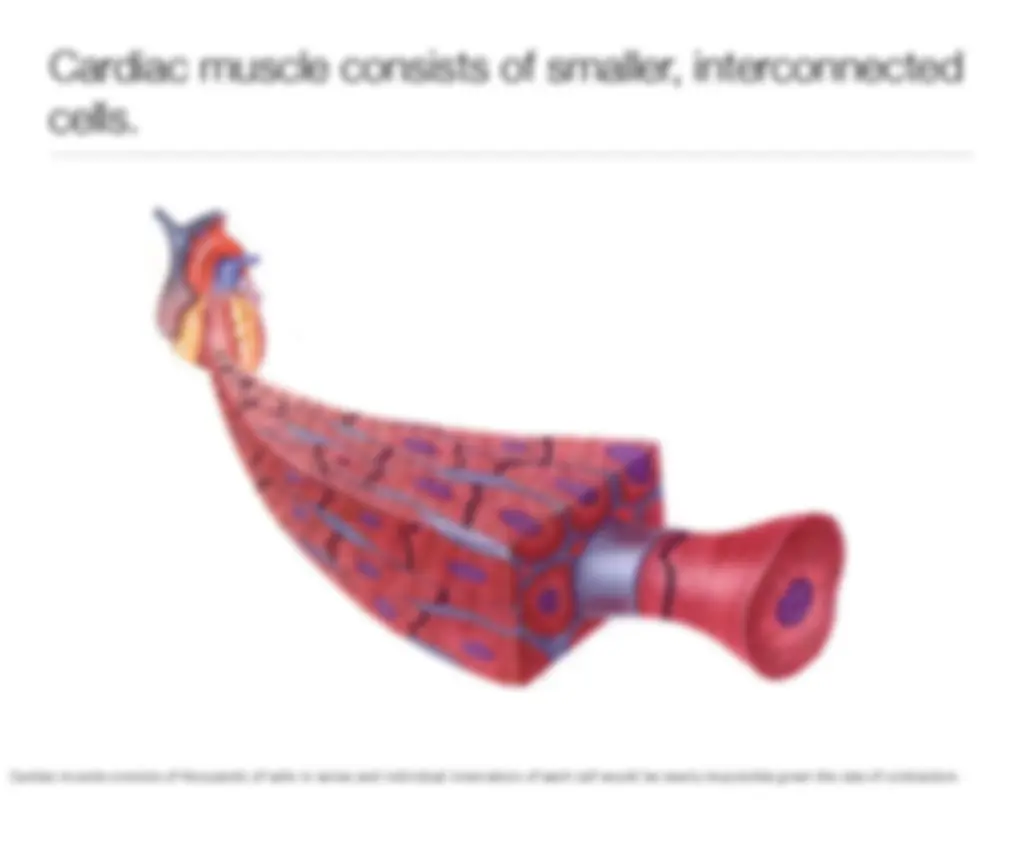
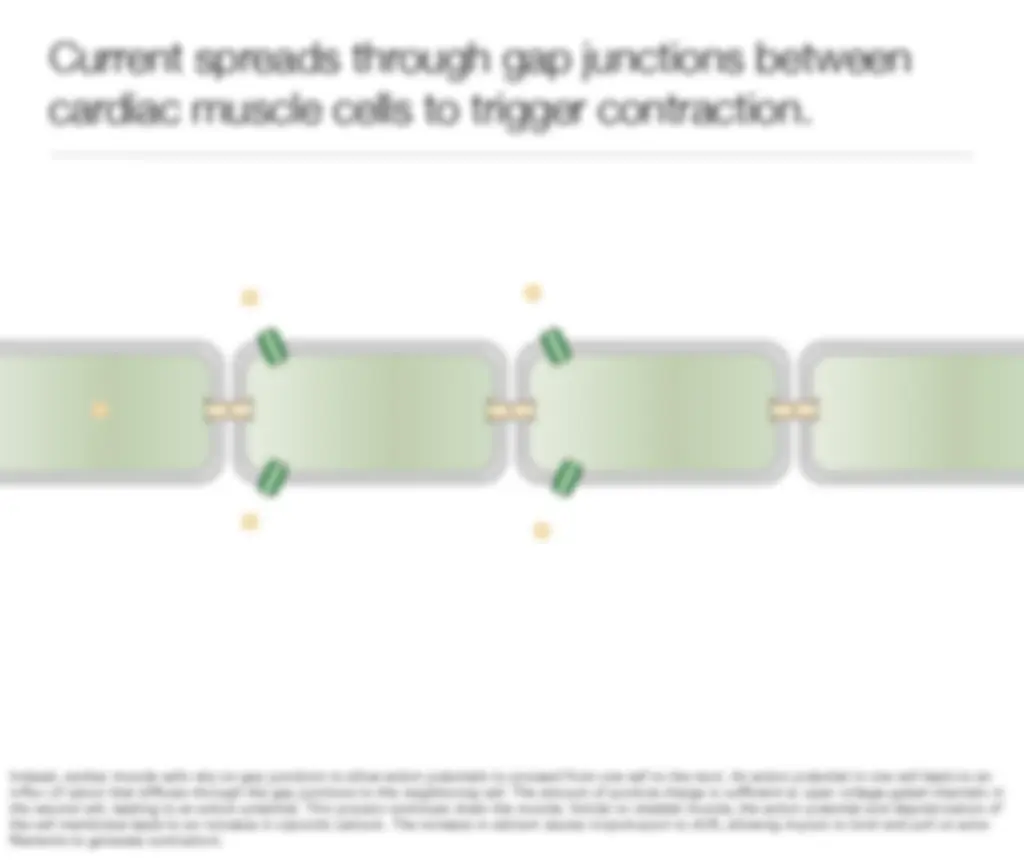
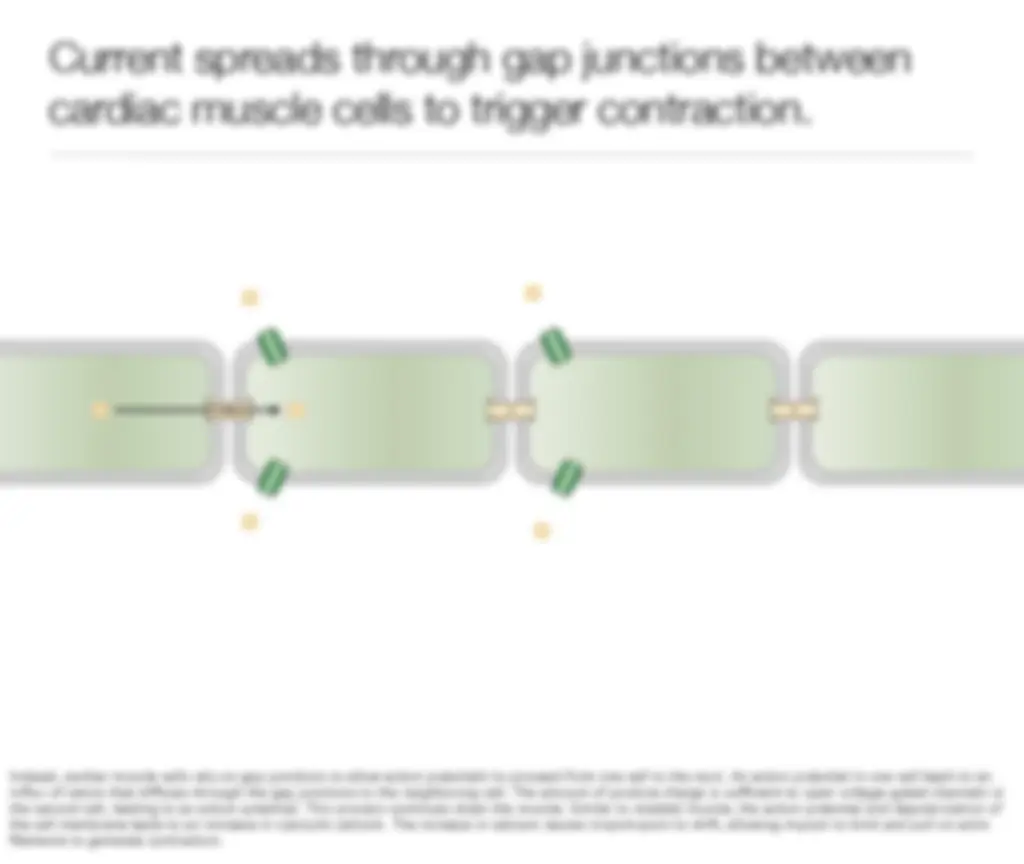
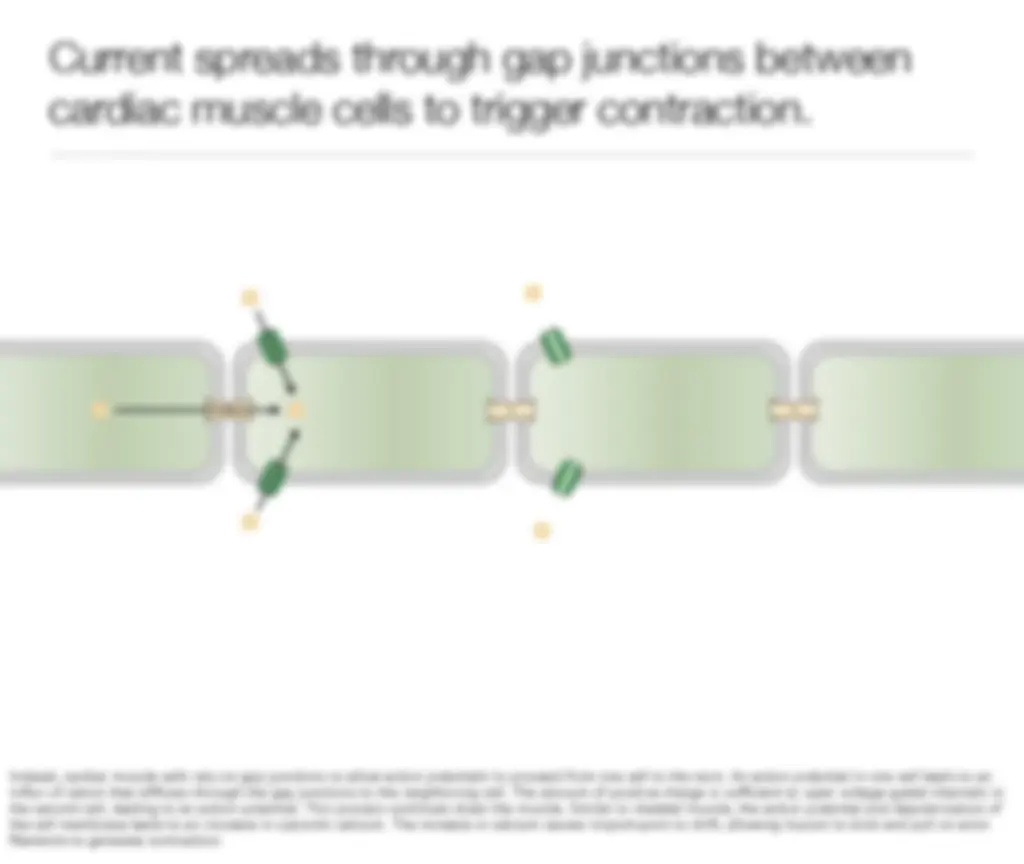
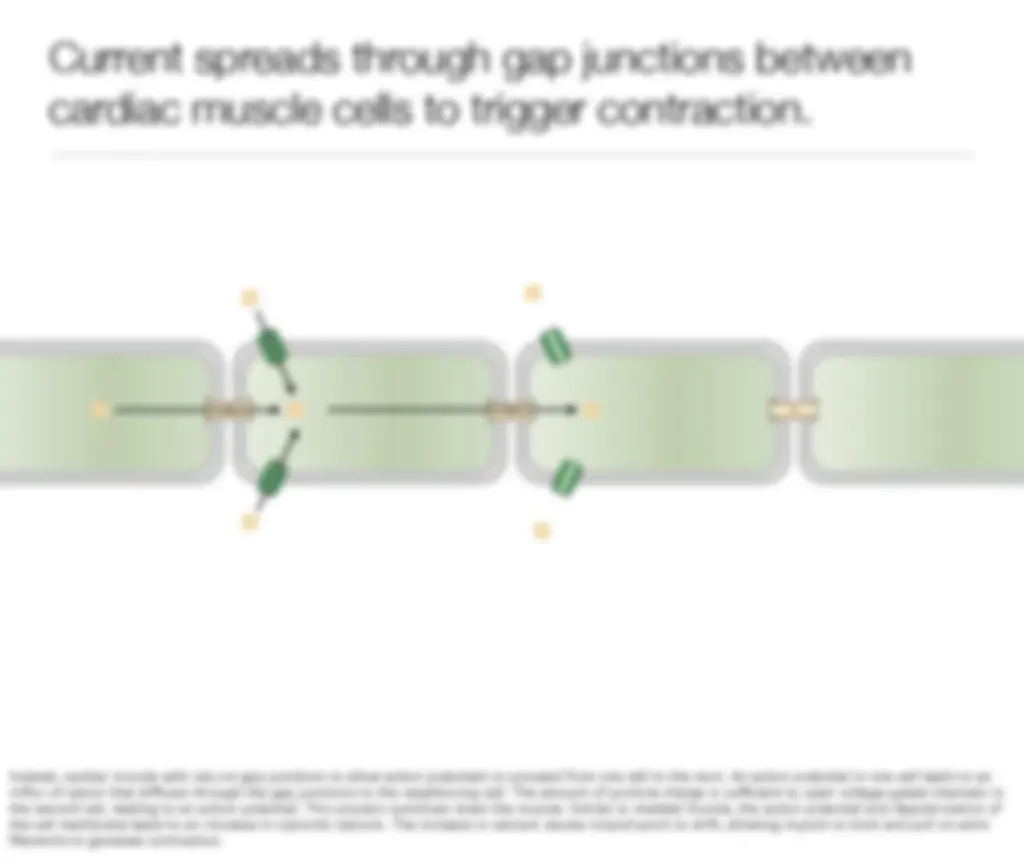
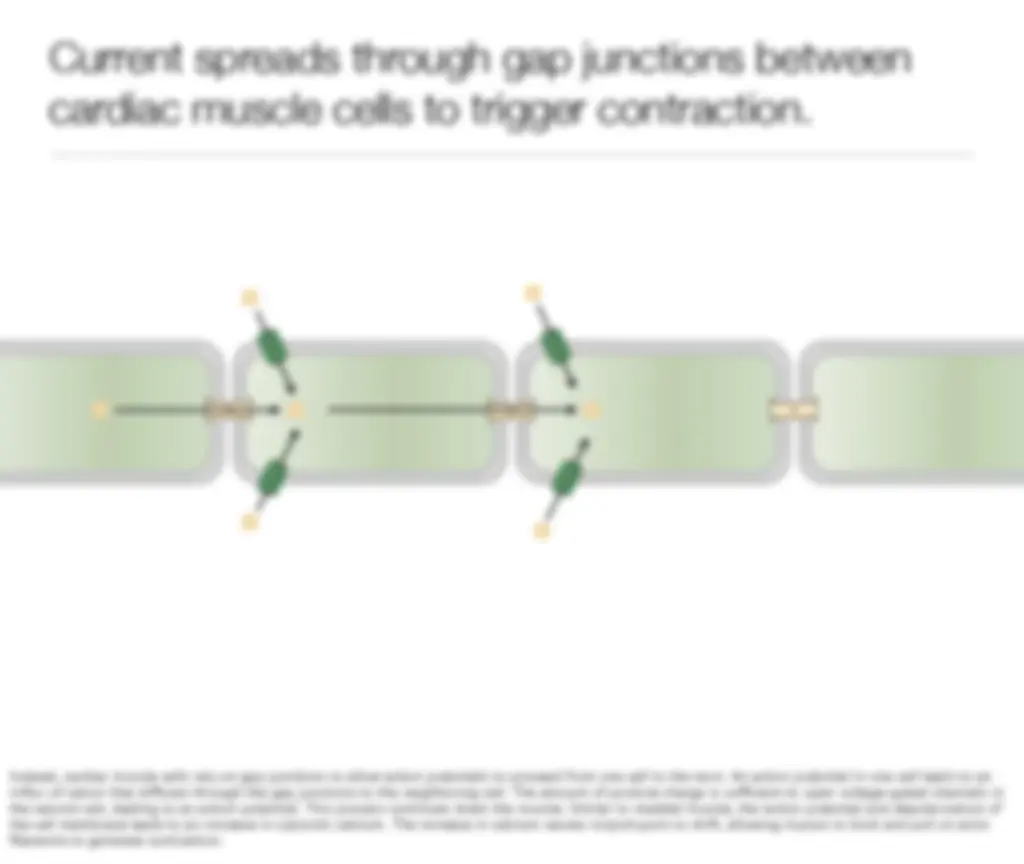
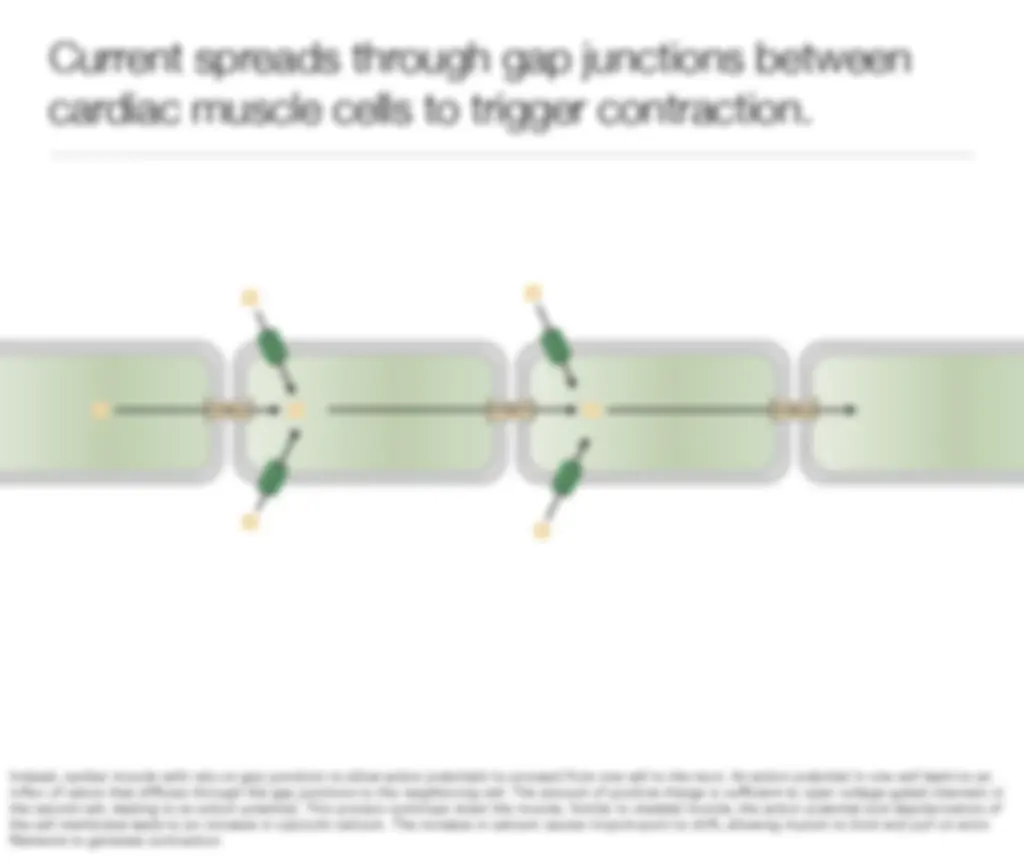
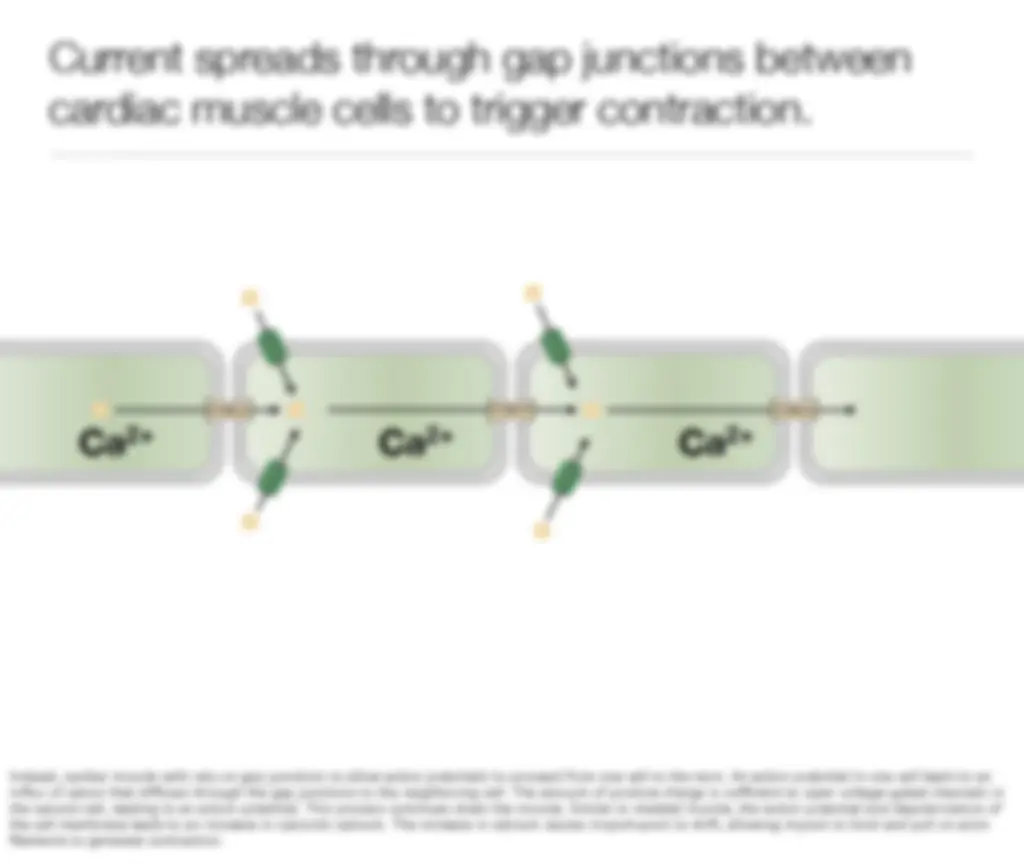
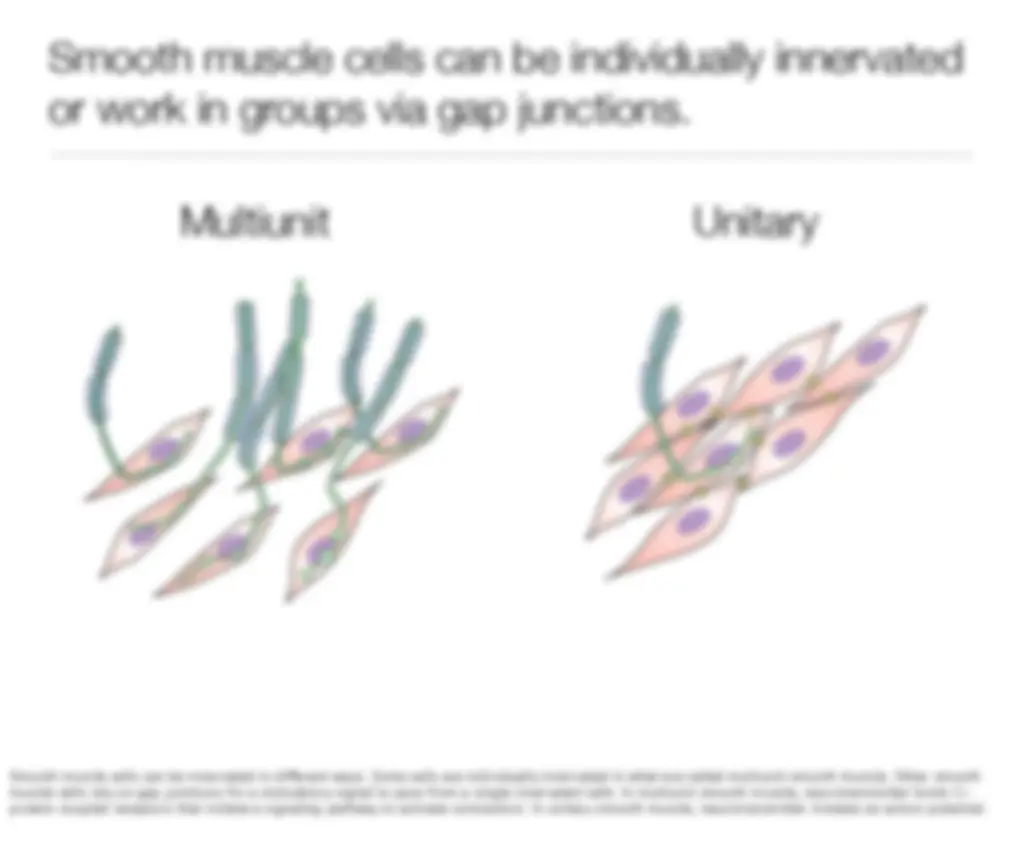
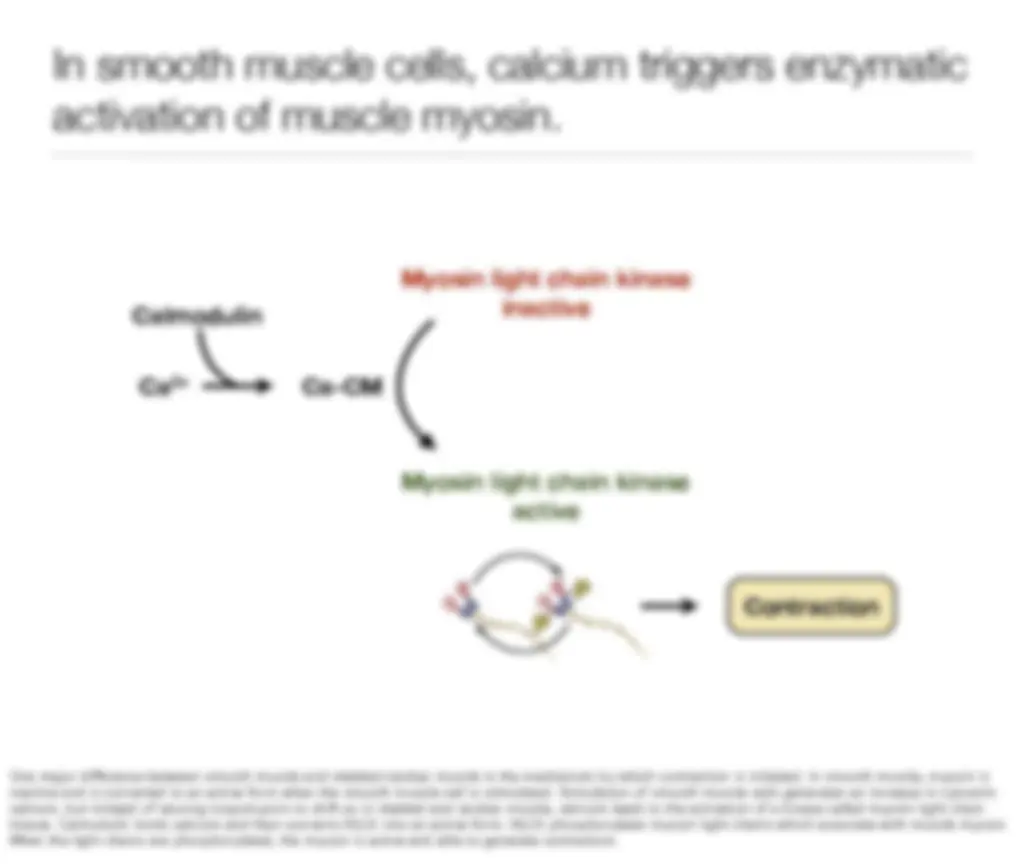
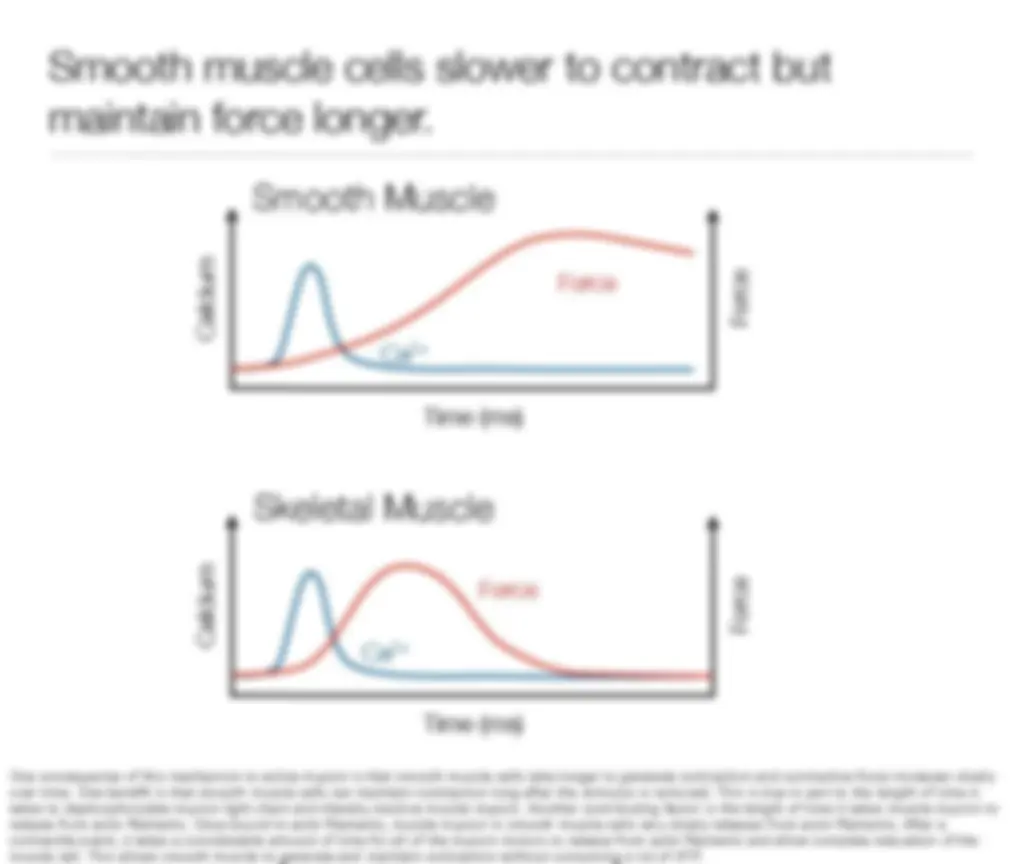

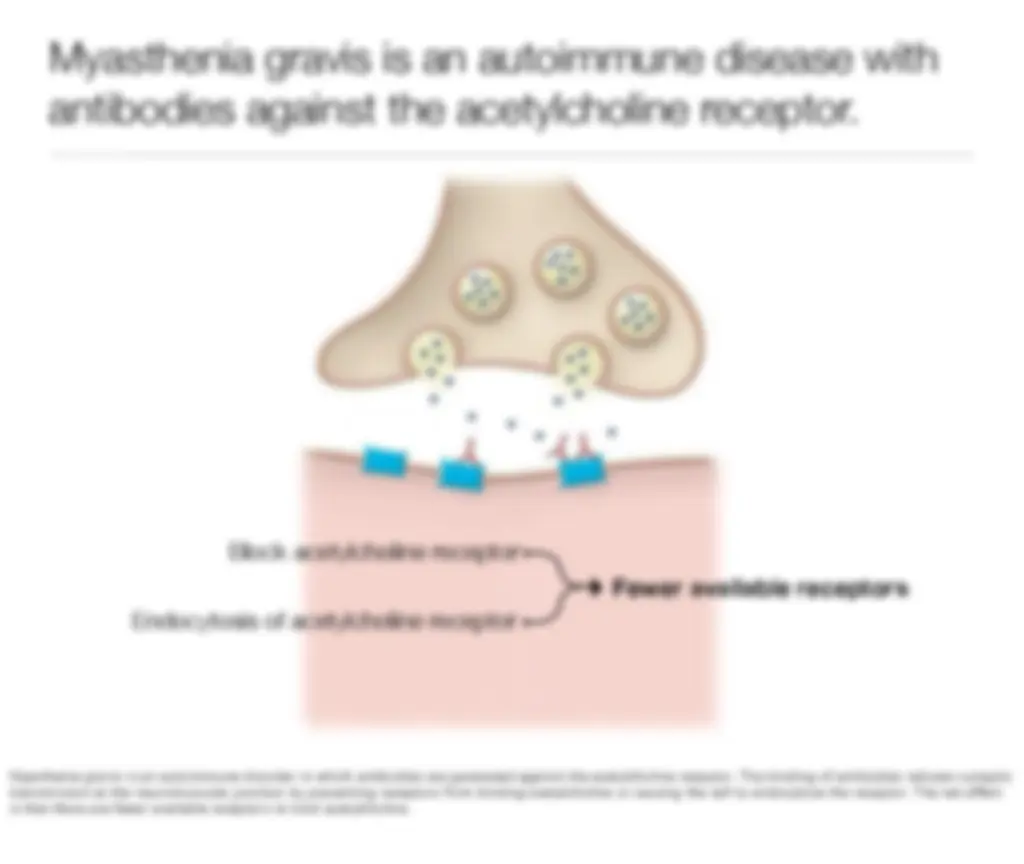
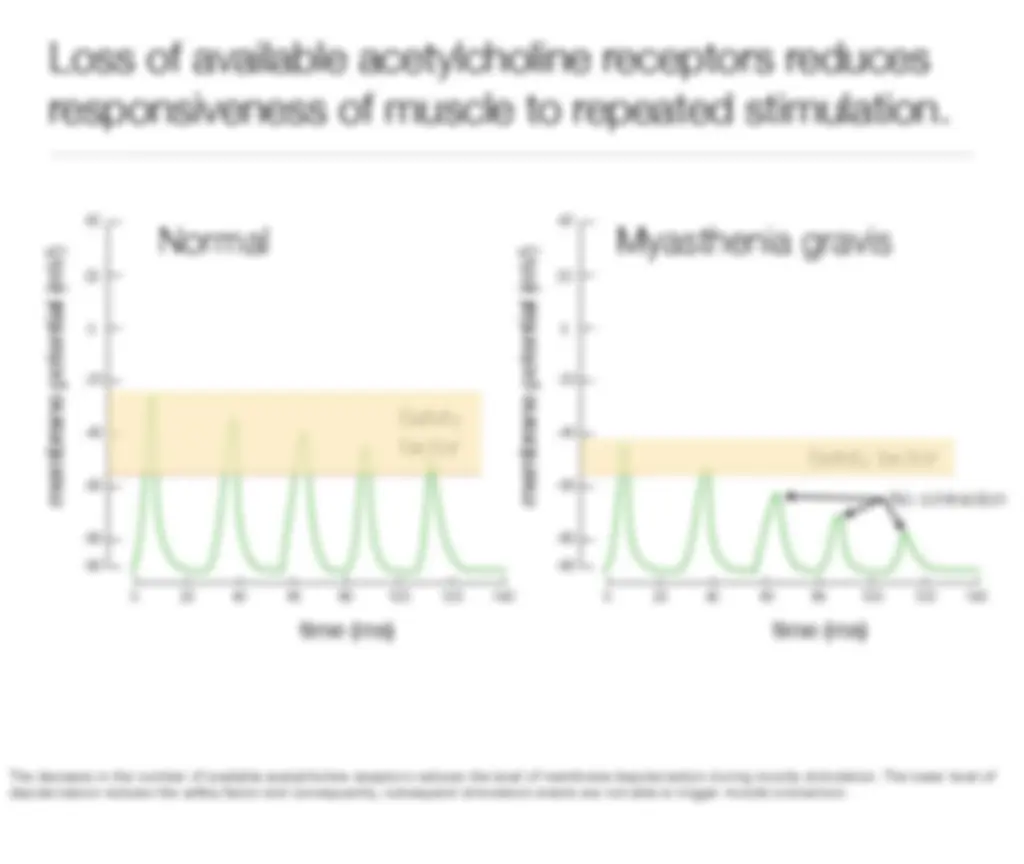
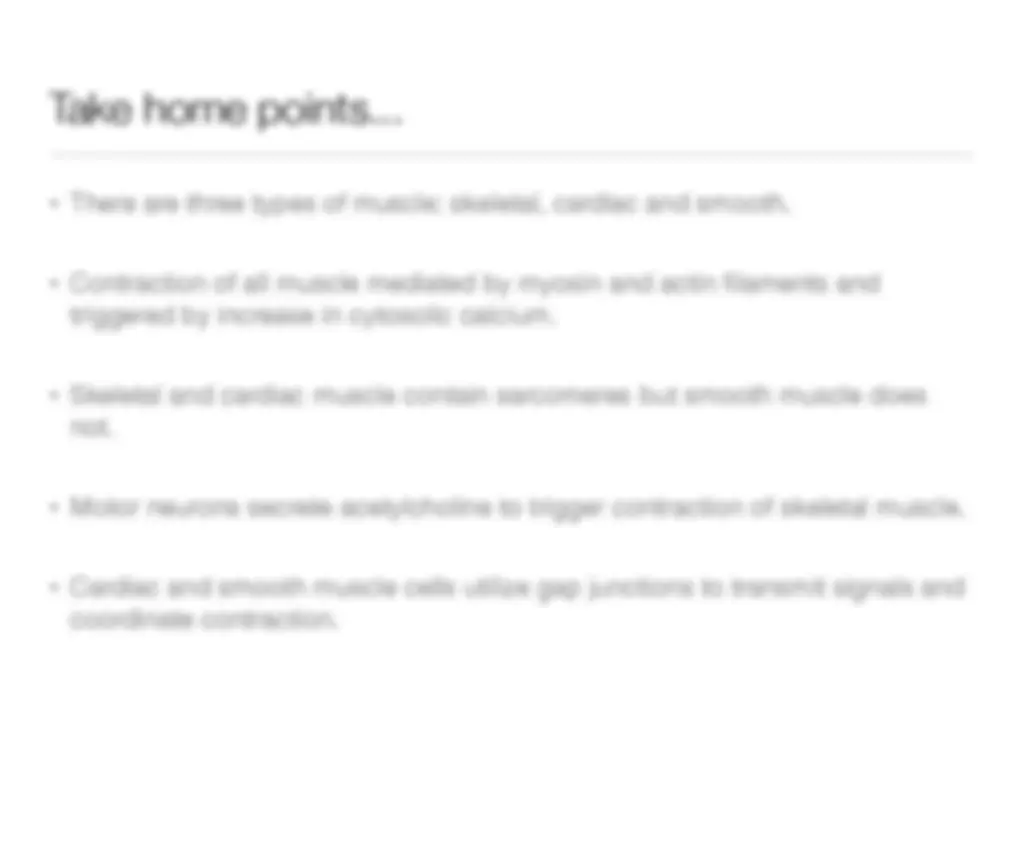


Study with the several resources on Docsity

Earn points by helping other students or get them with a premium plan


Prepare for your exams
Study with the several resources on Docsity

Earn points to download
Earn points by helping other students or get them with a premium plan
Community
Ask the community for help and clear up your study doubts
Discover the best universities in your country according to Docsity users
Free resources
Download our free guides on studying techniques, anxiety management strategies, and thesis advice from Docsity tutors
An overview of the different types of muscle cells - skeletal, cardiac, and smooth muscle - their structures, functions, and the mechanisms of muscle contraction. It covers the role of calcium and the neuromuscular junction in triggering muscle contraction.
Typology: Schemes and Mind Maps
1 / 54

This page cannot be seen from the preview
Don't miss anything!















































Skeletal muscle is involved most prominently in the movement of limbs but is also responsible for movement of the eyes. It can generate a range of forces from rapid and powerful to slow and delicate. Skeletal muscle is activated by voluntary and reflex signals. The cells of skeletal muscle span the length of entire muscle. So if a muscle is 5 cm, the muscle cells are 5 cm in length. To support the large volume of cytoplasm and all the proteins needed, skeletal muscle cells are multinucleated. The cells evolve from the fusion of many individual cells. Skeletal muscle cells are often referred to as myofibers. Note that the cells are arranged in parallel arrays to generate contraction in one direction.
Cardiac muscle cells responsible for pumping blood from the heart. They generate rapid and forceful contractions and are under involuntary control. Cardiac muscle cells are much smaller than skeletal muscle cells and are connected in series to span the length of cardiac muscle. Individual cells are linked and communicate via gap junctions which allows action potentials to pass from one cell to the next. Note that the cells are arranged in parallel arrays to generate contraction in one direction.
Smooth muscle surrounds most of the internal organs: GI tract, respiratory tract, bladder. It is also surrounds most blood vessels and veins. It provides tone and shape but can also generate slow and powerful contractions to change the size and shape of an organ. Smooth muscle cells are under control of the autonomous nervous system. Smooth muscle is composed of numerous spindled shaped cells. Gap junctions between cells allows coordination of contraction. Note that the smooth muscle cells are arranged in layers that are orthagonal to each other. Smooth muscle often contracts an organ in multiple directions.
Smooth muscle surrounds most of the internal organs: GI tract, respiratory tract, bladder. It is also surrounds most blood vessels and veins. It provides tone and shape but can also generate slow and powerful contractions to change the size and shape of an organ. Smooth muscle cells are under control of the autonomous nervous system. Smooth muscle is composed of numerous spindled shaped cells. Gap junctions between cells allows coordination of contraction. Note that the smooth muscle cells are arranged in layers that are orthagonal to each other. Smooth muscle often contracts an organ in multiple directions.
To get a better sense of how smooth muscle cells control the shape of an organ, one can look at blood vessels and bronchioles. Here, the smooth muscle cells are arranged circumferentially around the vessels and bronchioles. Contraction of the cells, decreases the diameter of the lumen of the vessel to restrict the volume of blood that can flow through vessel. The cardiovascular system uses smooth muscle to control the distribution of blood to different capillary beds. Smooth muscle cells perform a similar function in the respiratory system. Smooth muscle cells contract to narrow the lumen of the bronchioles. This restricts the amount of air that flows through the bronchiole and is important for preventing access of foreign particles and microorganisms to the deeper aveoli. However, over stimulation or proliferation of smooth muscle cells can lead to pulmonary diseases such as asthma.
All three types of muscle cells share some features. All generate movement through contraction. All use force from myosin pulling on actin filaments to generate force for contraction. All use calcium as trigger for contraction. The differences is in the inner architecture of the cells and how myosin is activated to generate contraction.
All three types of muscle cells share some features. All generate movement through contraction. All use force from myosin pulling on actin filaments to generate force for contraction. All use calcium as trigger for contraction. The differences is in the inner architecture of the cells and how myosin is activated to generate contraction.
The different types of muscle express different types of myosin which to a large extend determines the contractile properties of the muscle. There are several different types of skeletal muscle (e.g. slow-twitch and fast-twitch) and each expressed a specific type of myosin. Also note that most non-muscle cells express non-muscle myosin II which helps those cells generate tension and changes in cell shape.
Muscle Muscle cell Myofibril Muscle cells span length of muscle and are multinucleated. Contraction of the cells will shorten muscle. Each cell is filled with myofibrils that span the length of the muscle cell. Myofibrils are bundles of actin and myosin filaments that form the contractile apparatus.
A cross section of a skeletal muscle cell reveals a cytoplasm that is filled with myofibrils (parallel arrays of actin and myosin filaments). Mitochondria are abundant in some skeletal muscle cells to provide ATP via oxidative phosphorylation. The nucleus of skeletal muscle cells is pushed to the periphery to accommodate the myofibrils.
Histologically, skeletal muscle appears in longitudinal sections to contain a series of light and dark bands. This pattern gives skeletal muscle its other name: striated muscle. The light and dark bands reflect the presence or absence of actin and myosin filaments. The light bands are regions where there are only actin filaments and the dark bands contain both actin and myosin filaments. This repeated pattern can be divided into a structural and functional unit called the sarcomere. By EM, sarcomeres are defined by two dark bands called Z-disks. Sarcomeres are arranged in series and run the entire length of the muscle cell.
This image show the arrangement of actin and myosin filaments in a sarcomere. Actin filaments extend from Z-line or Z-disk toward center of sarcromere. The plus ends of the actin filaments are stabilized in the Z-discs and the minus ends are located toward the middle of the sarcomere. Actin filaments end before reaching the center of the sarcomere. Myosin filaments span the central region of sarcomere and overlap part of the actin filaments. Each sarcomere is about 2.4 μm in length.